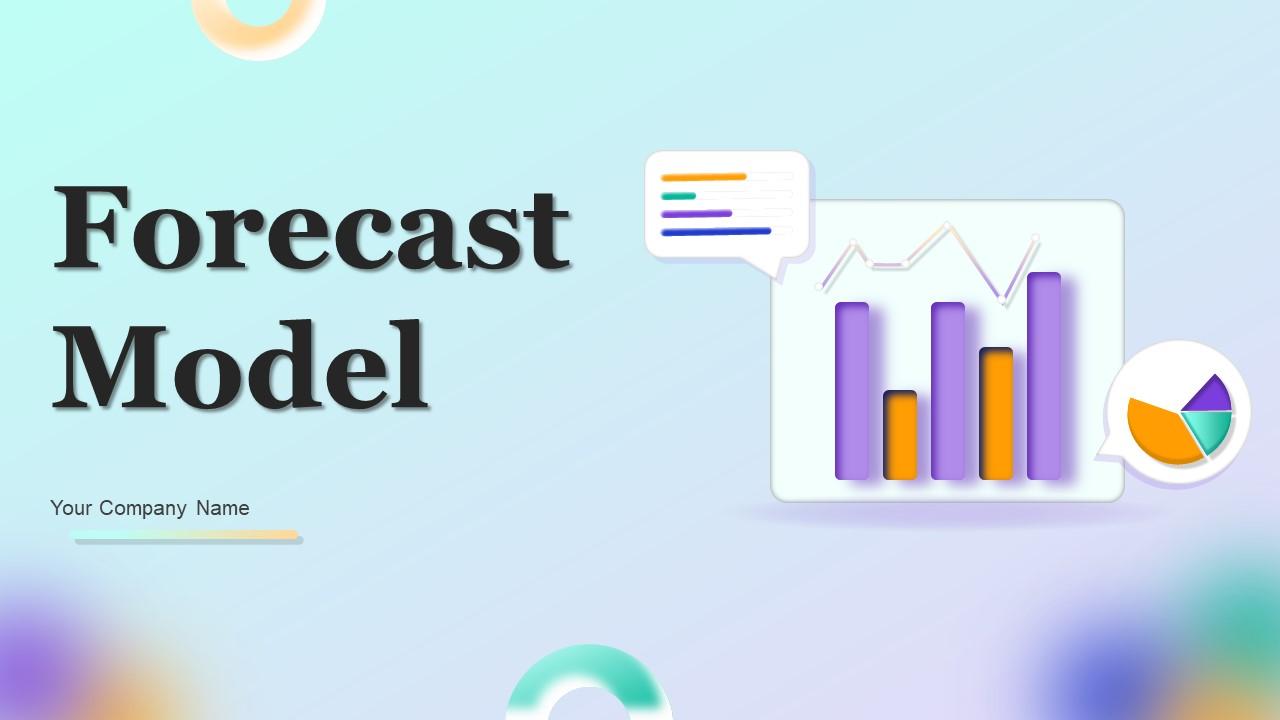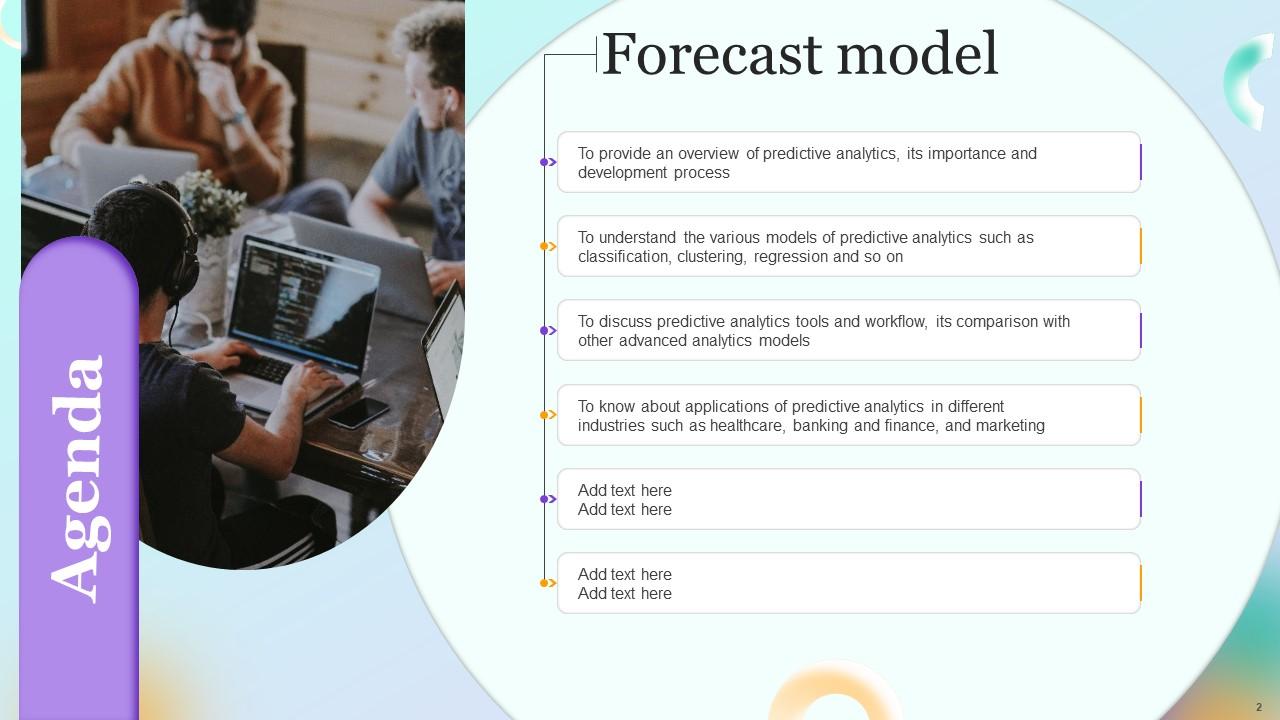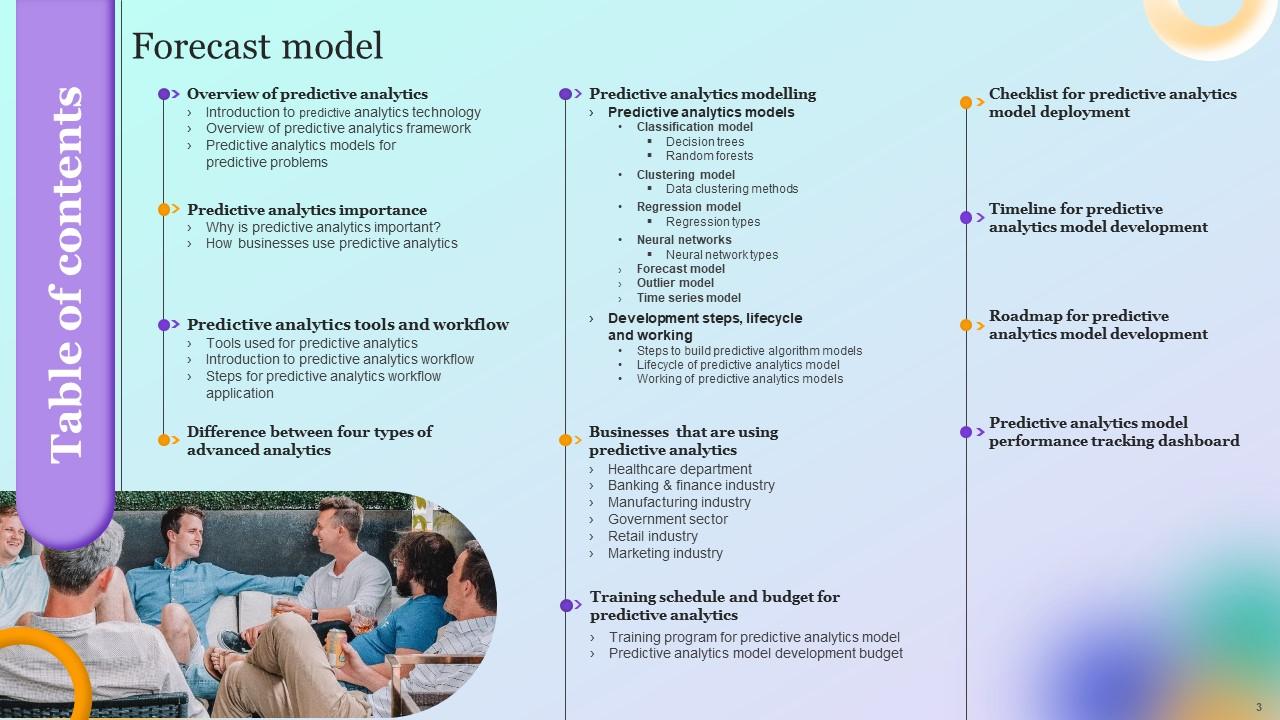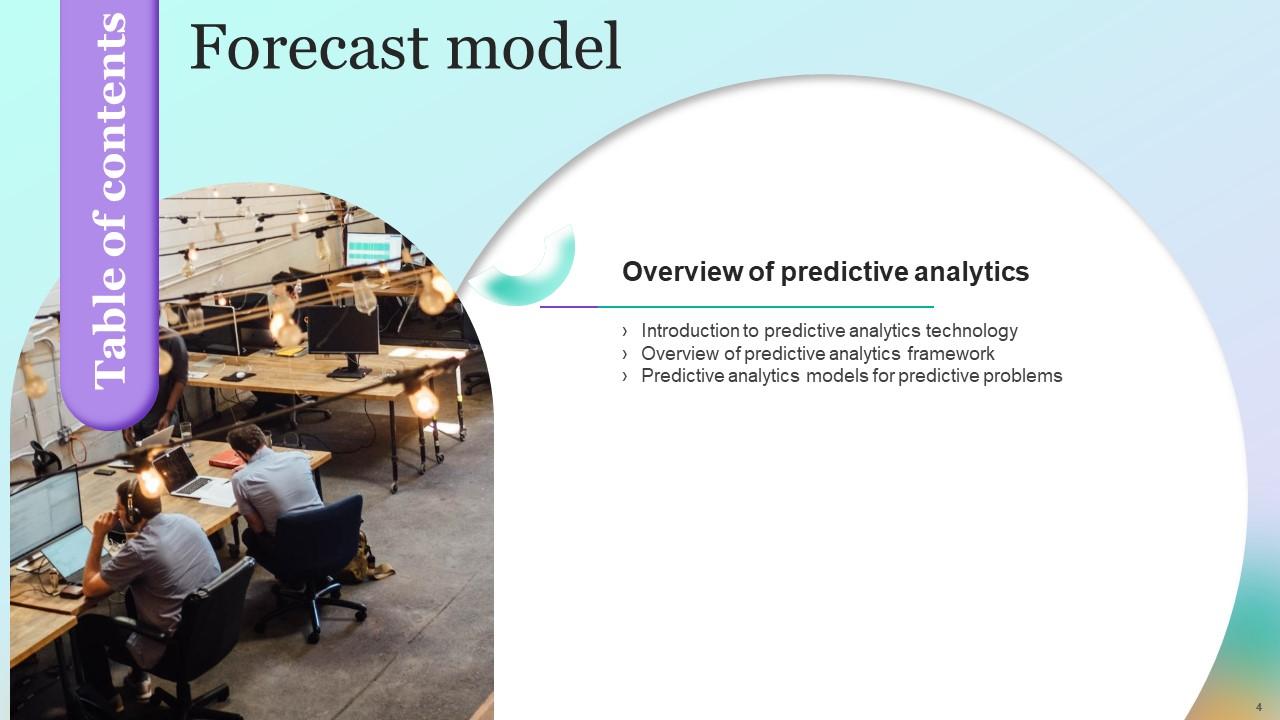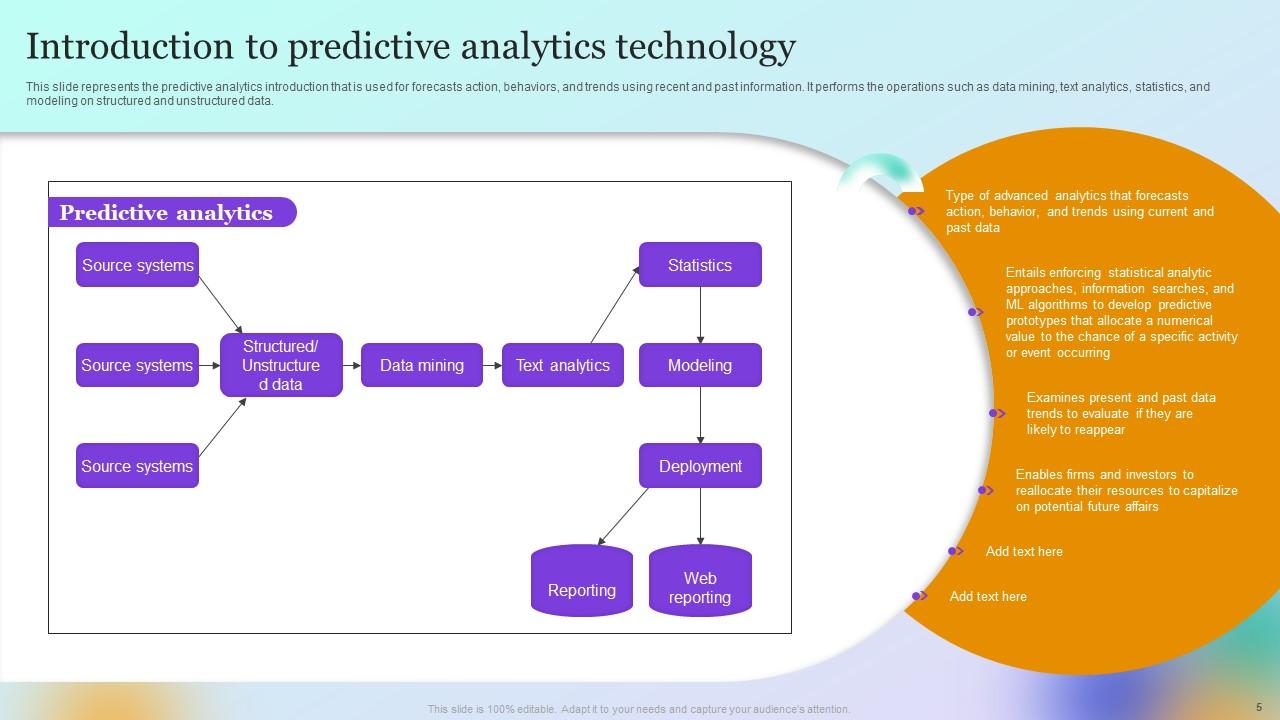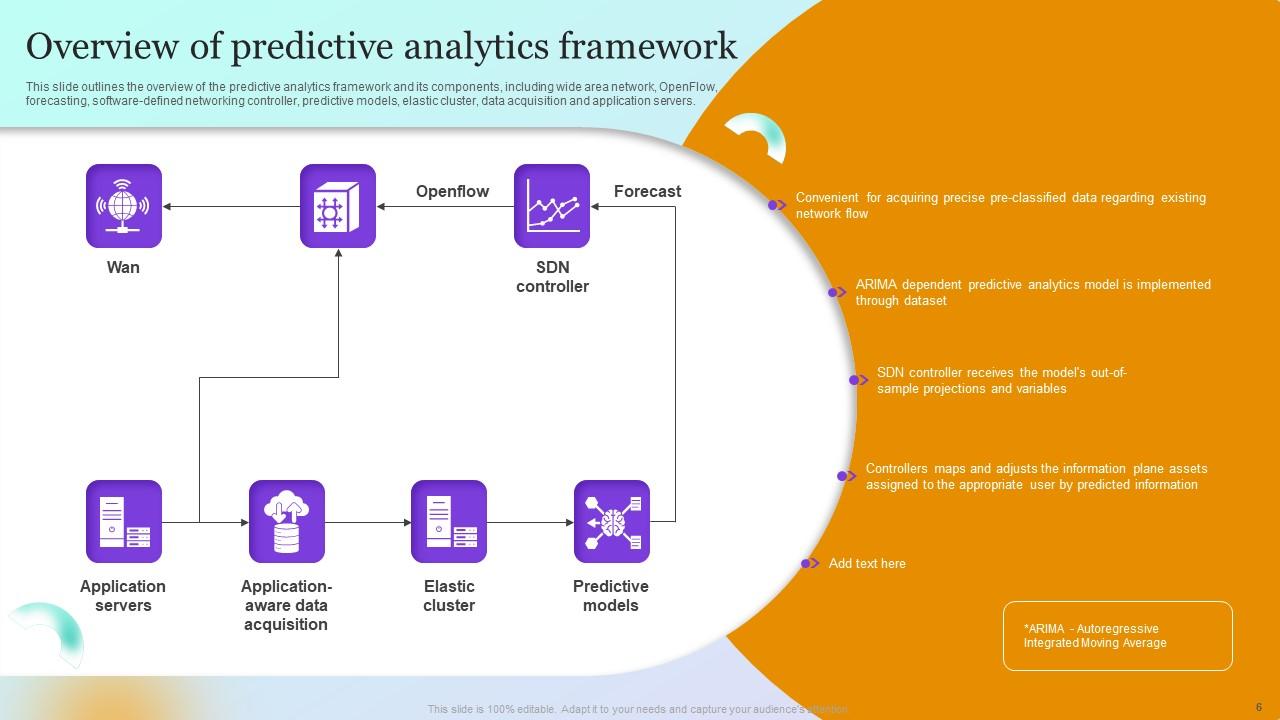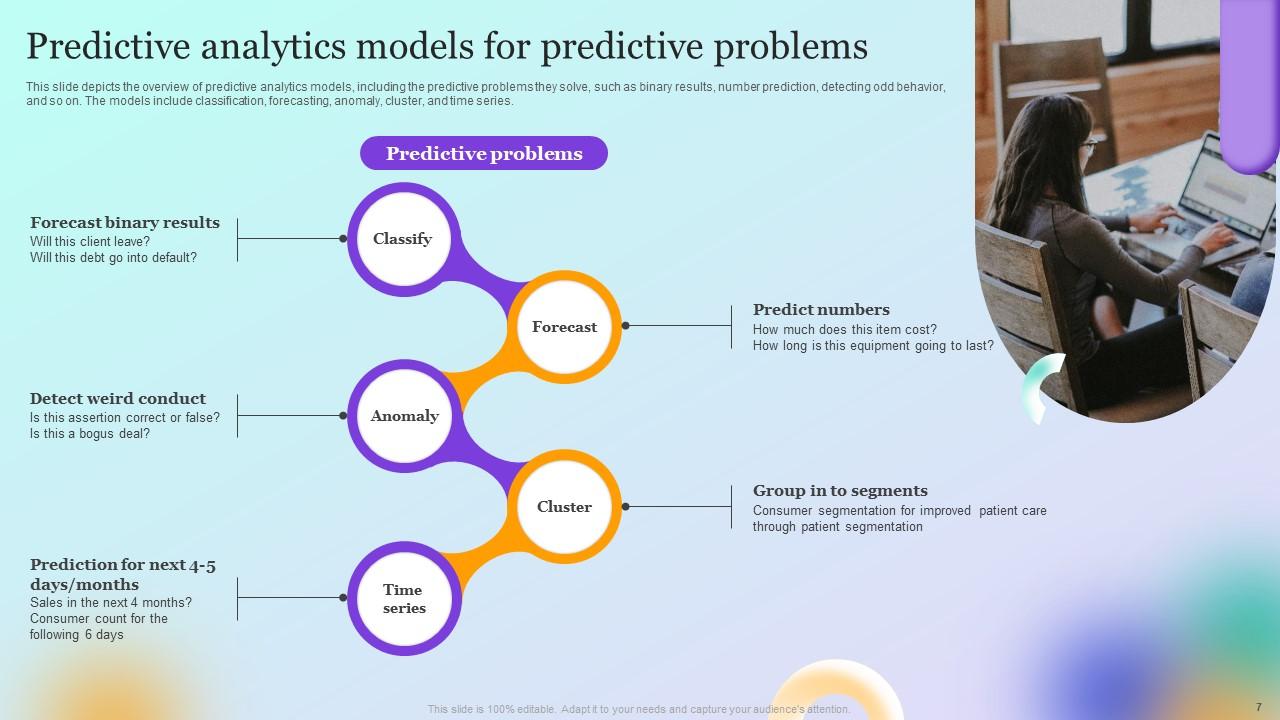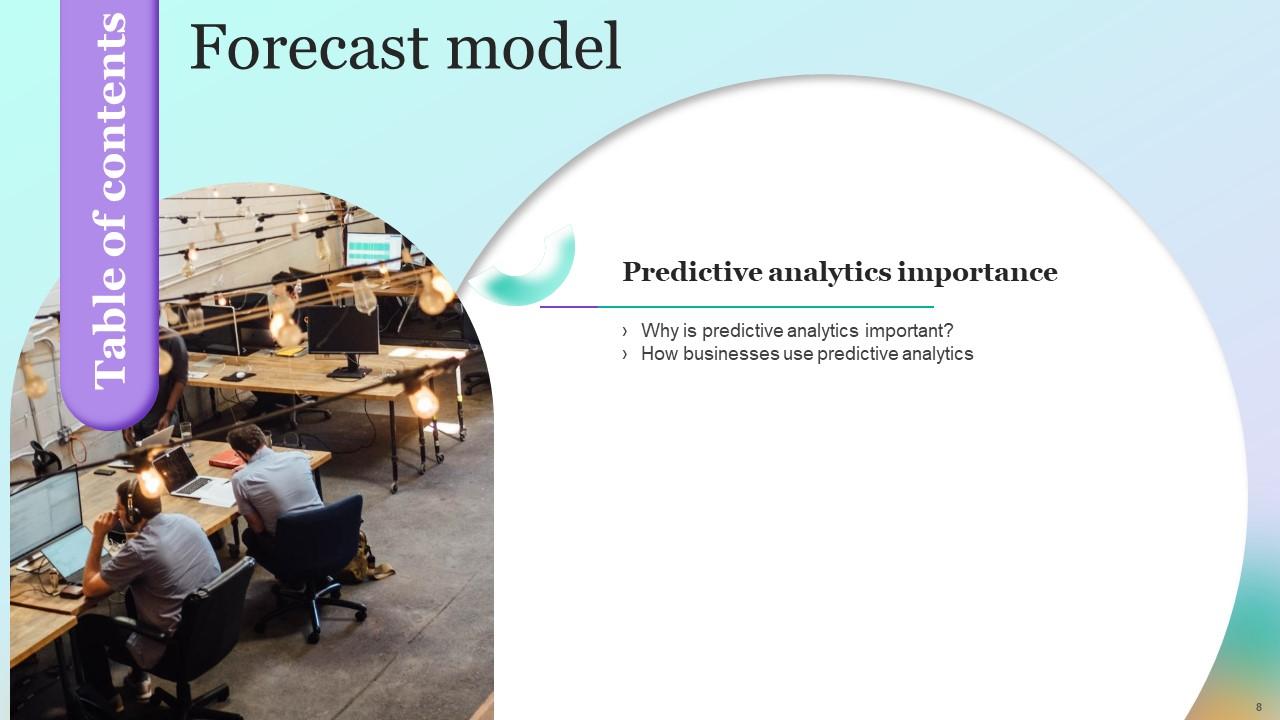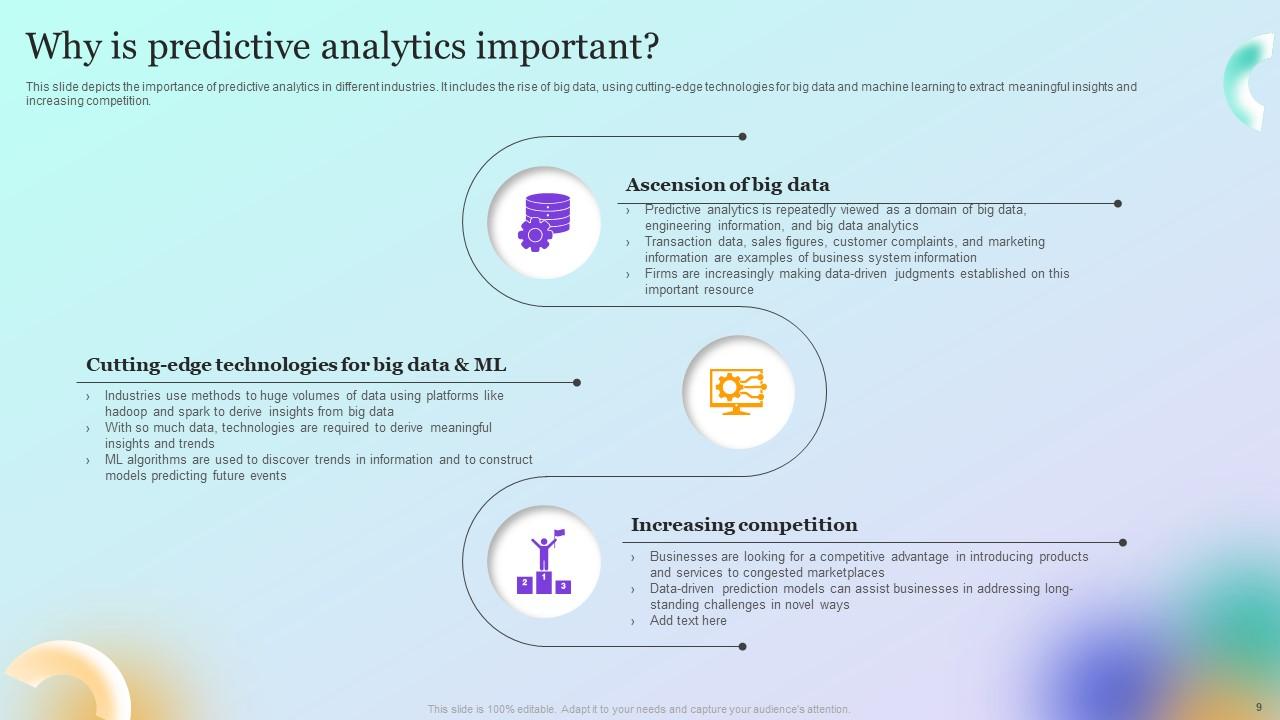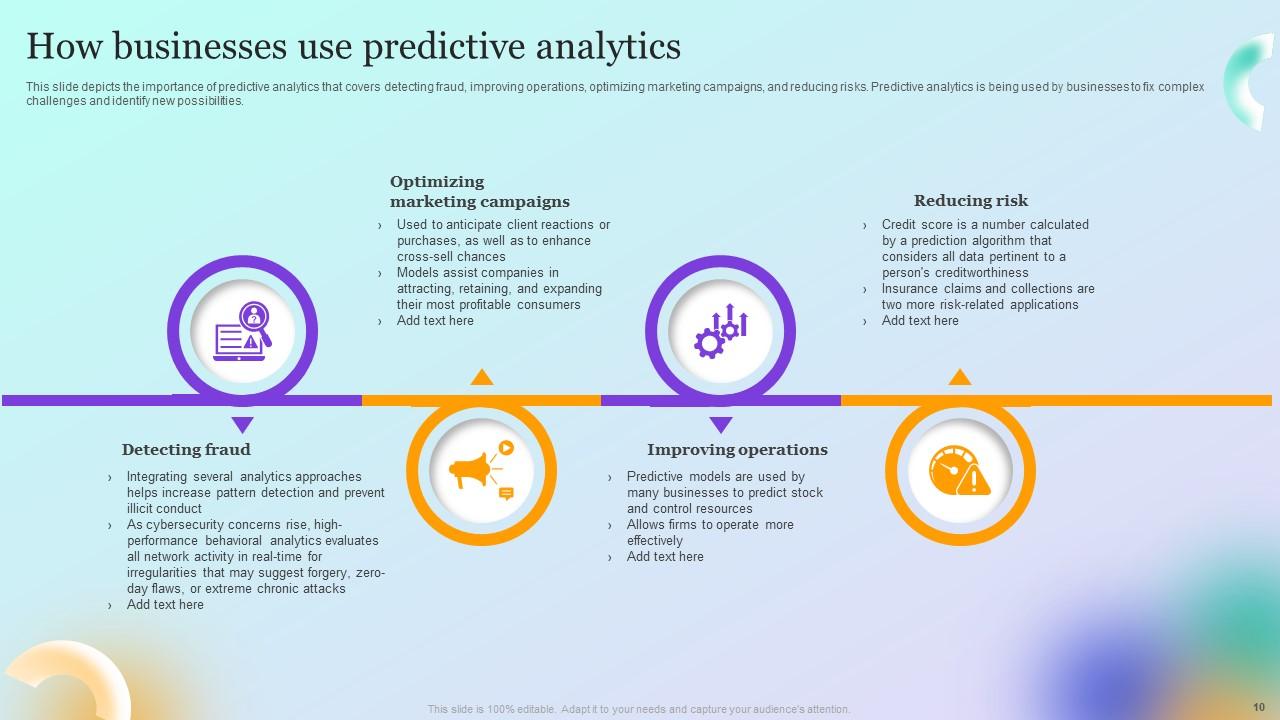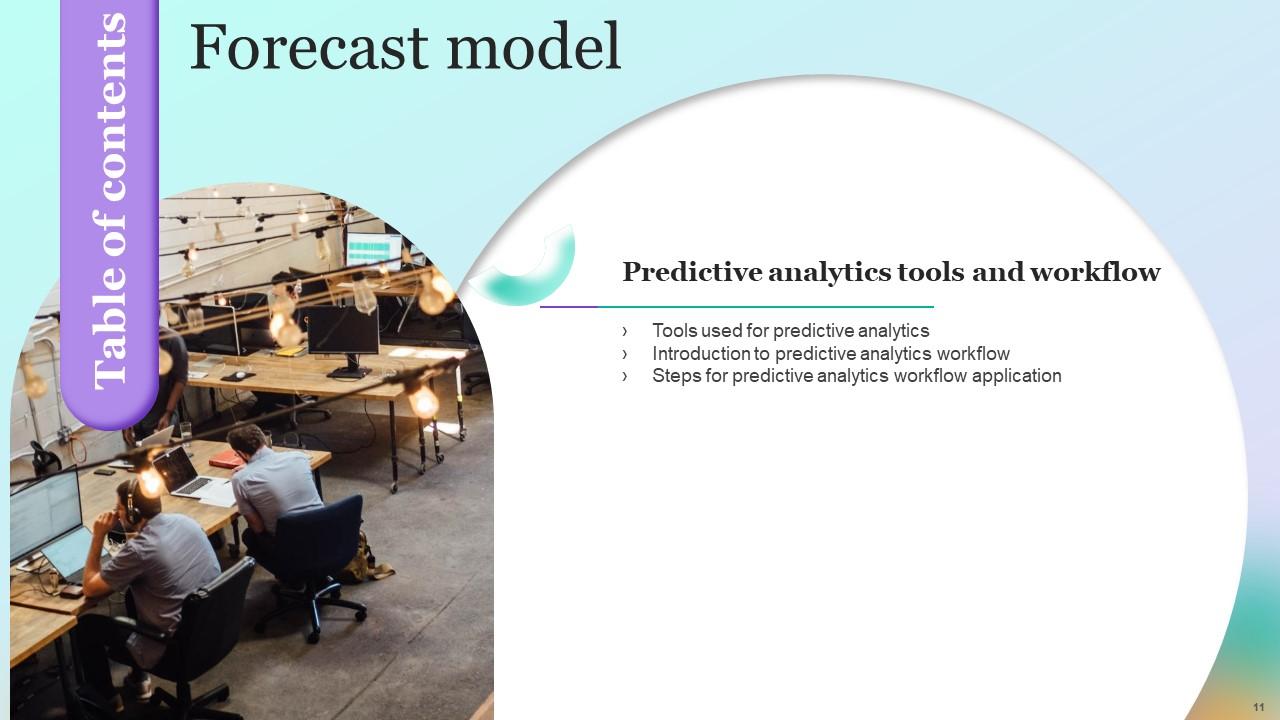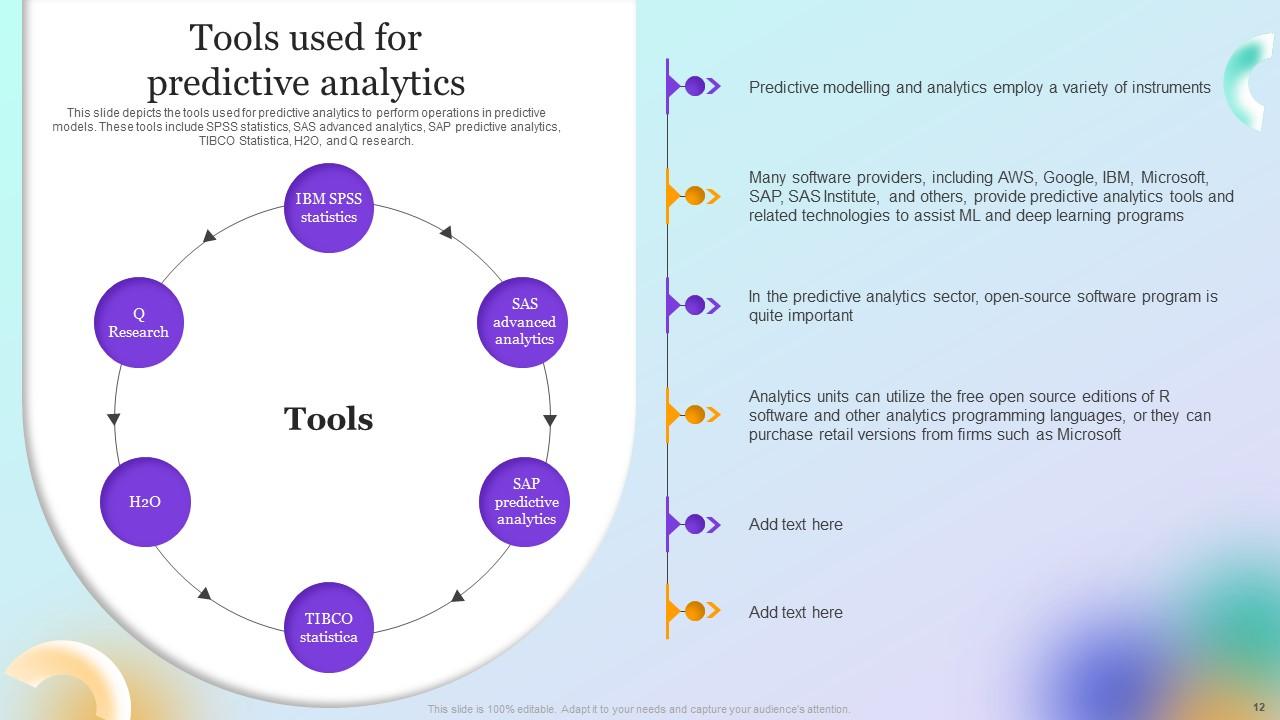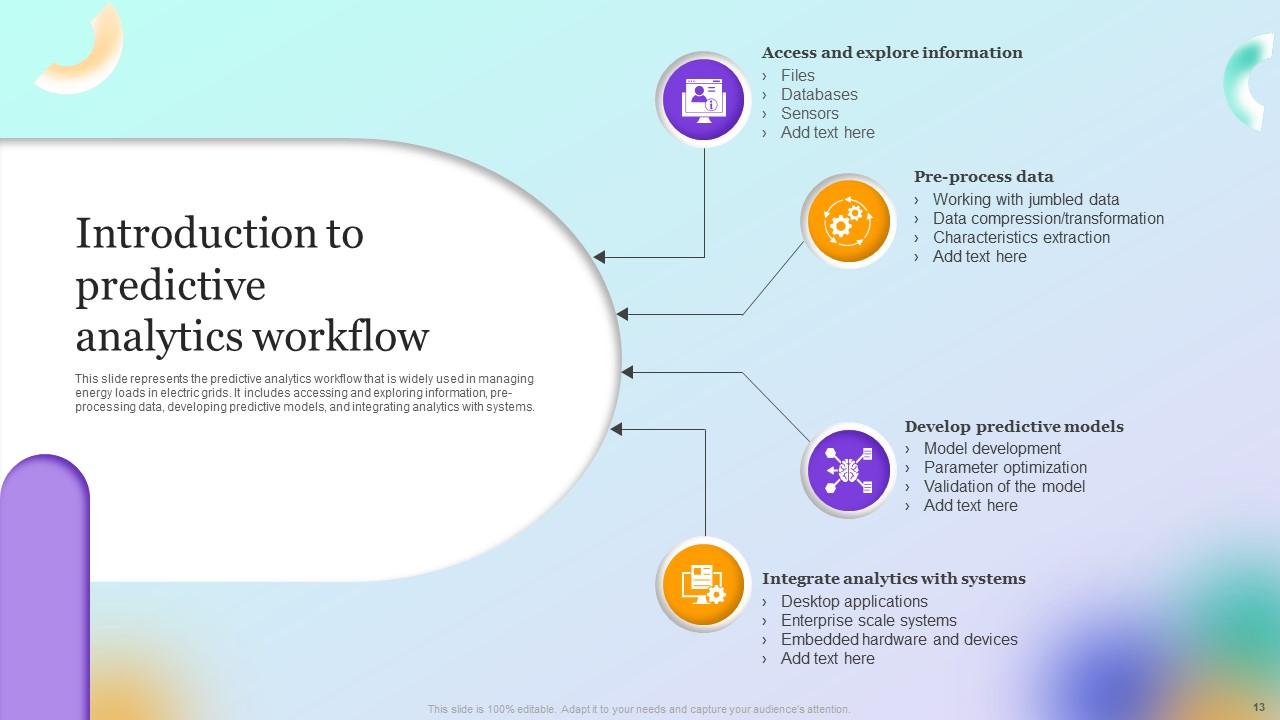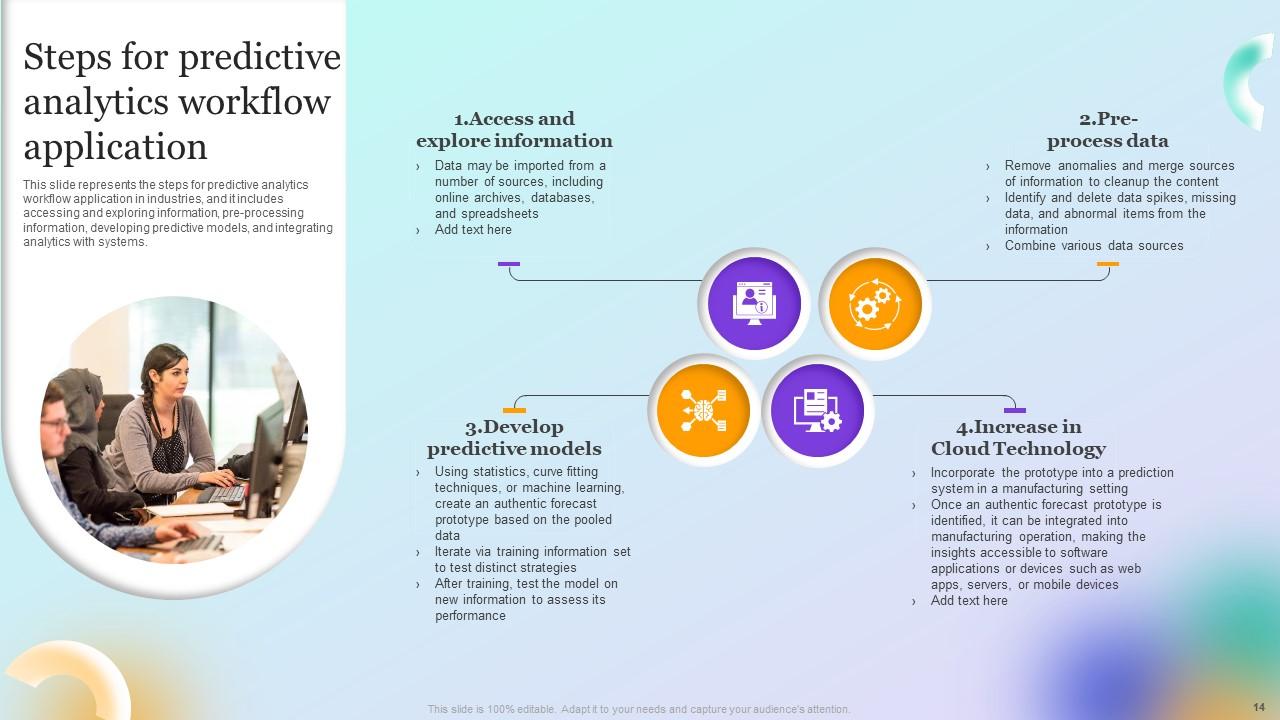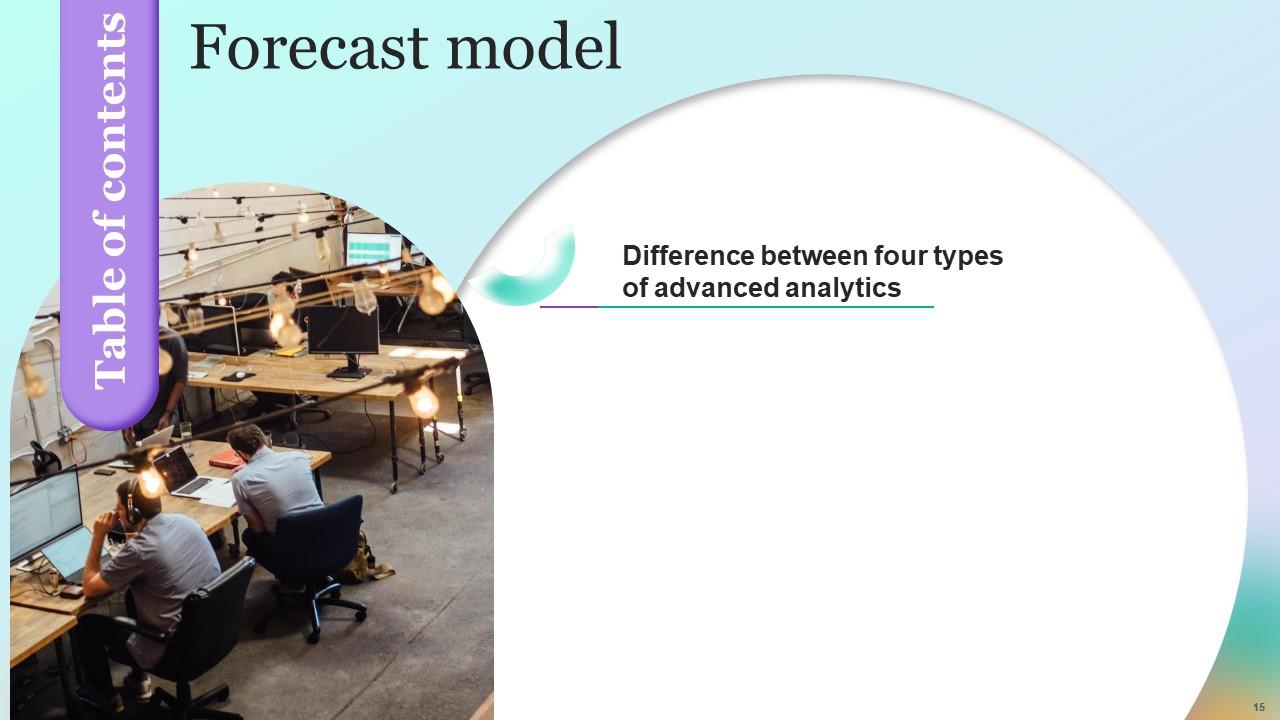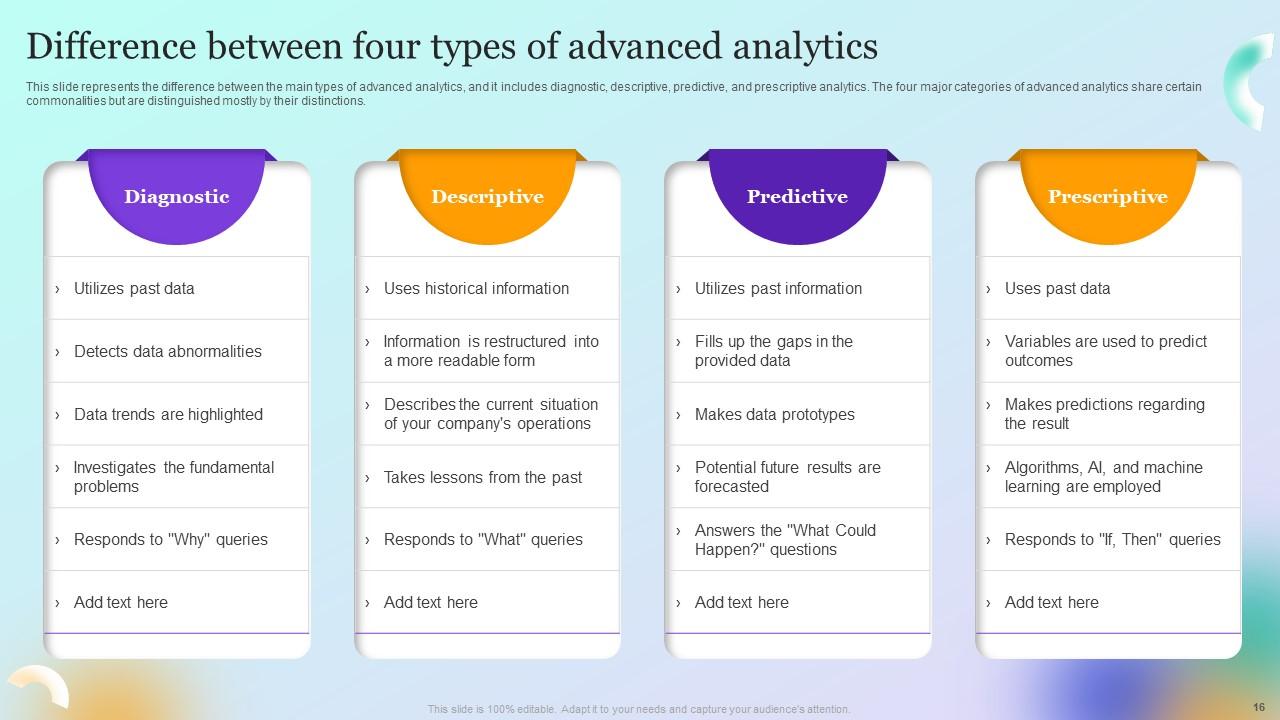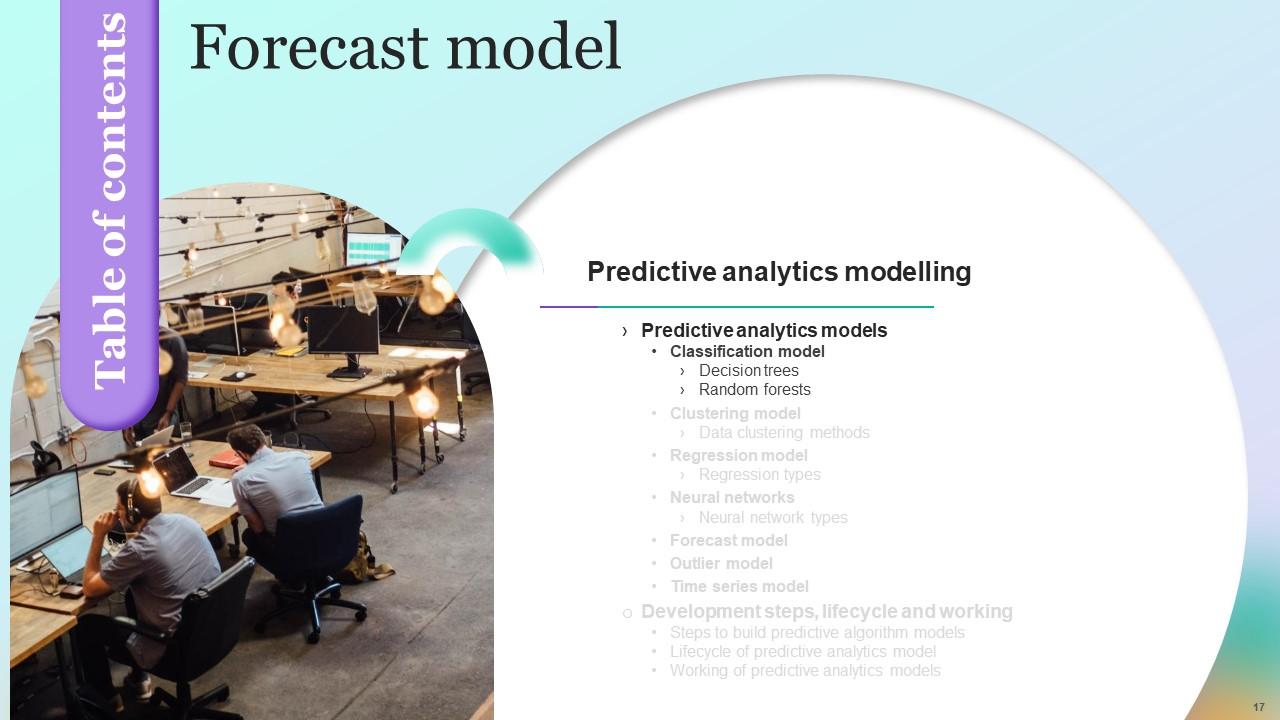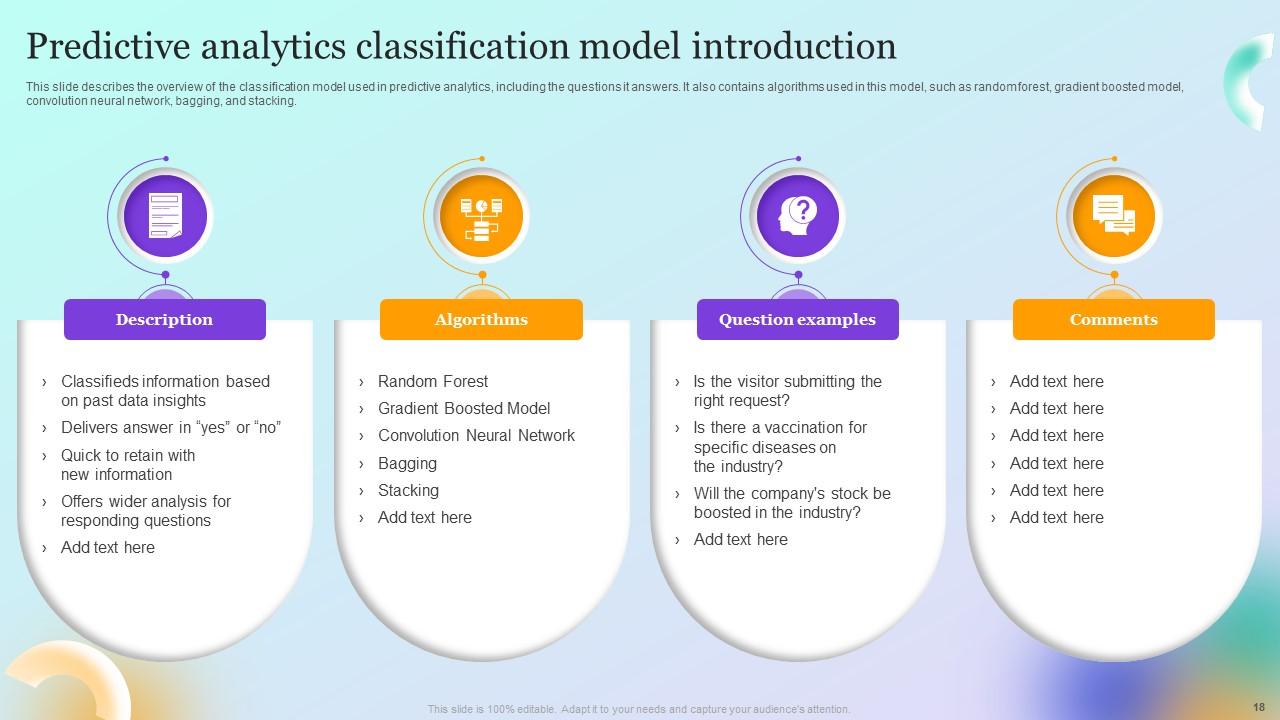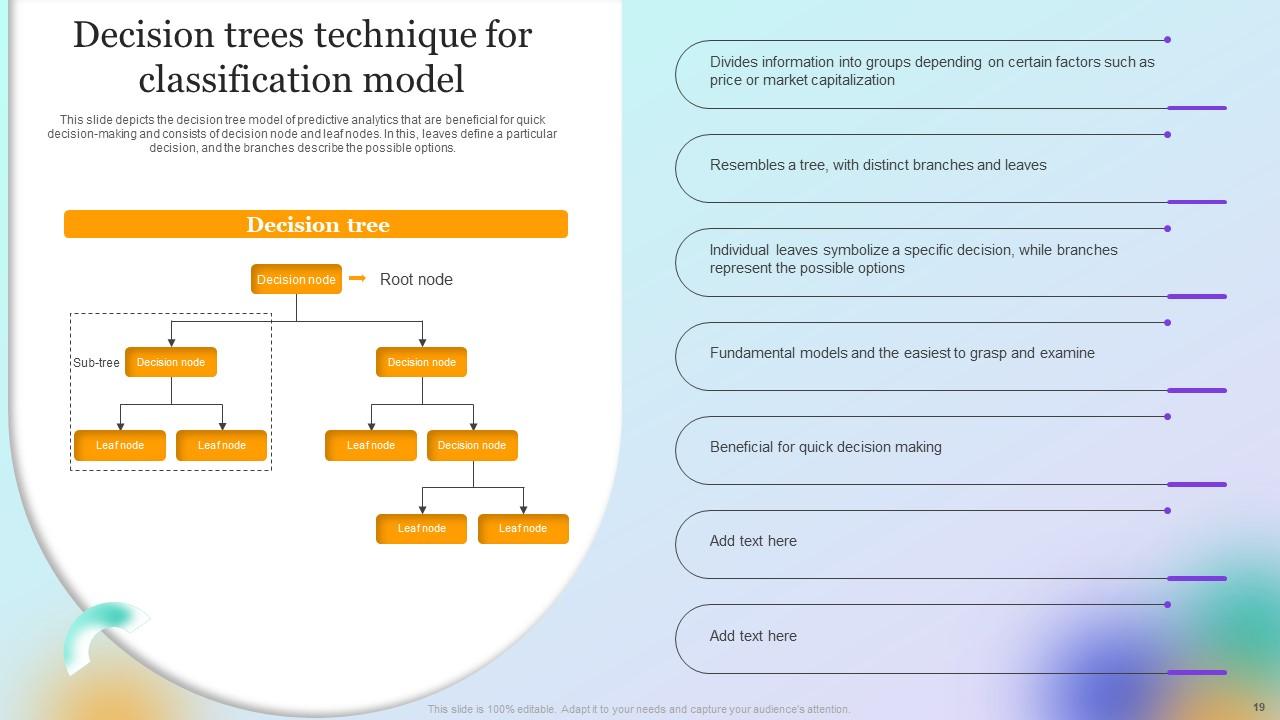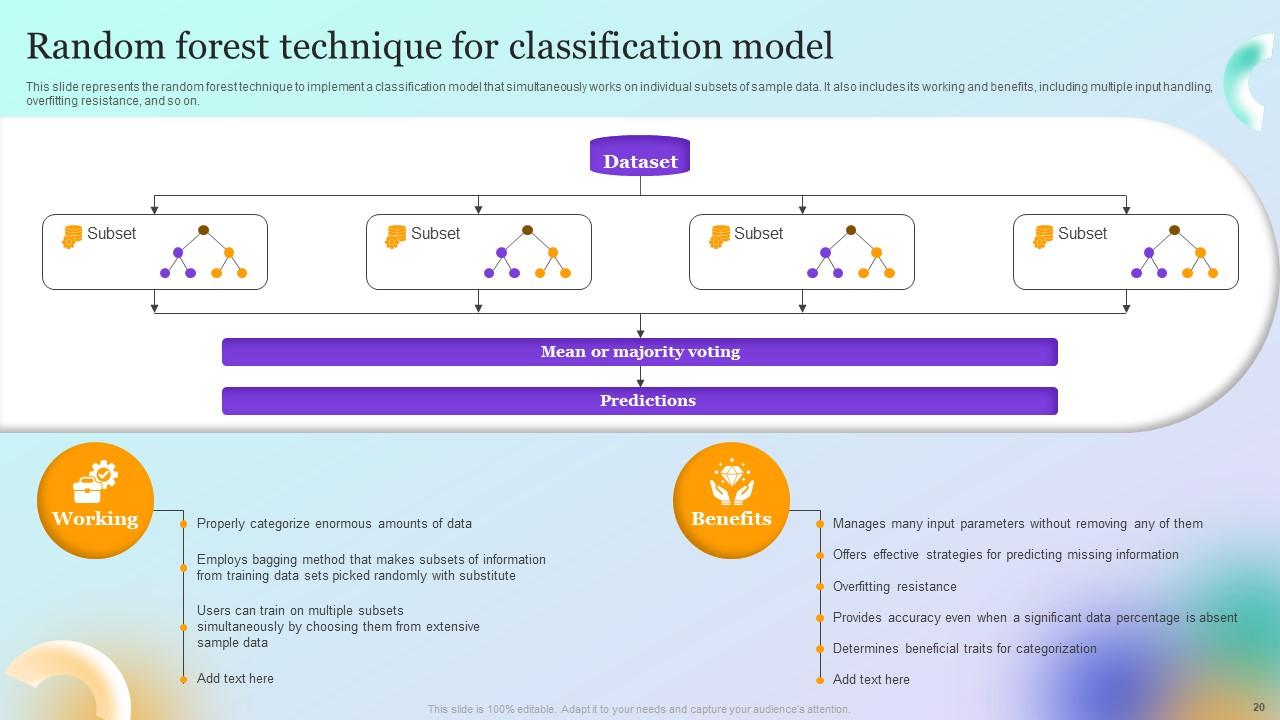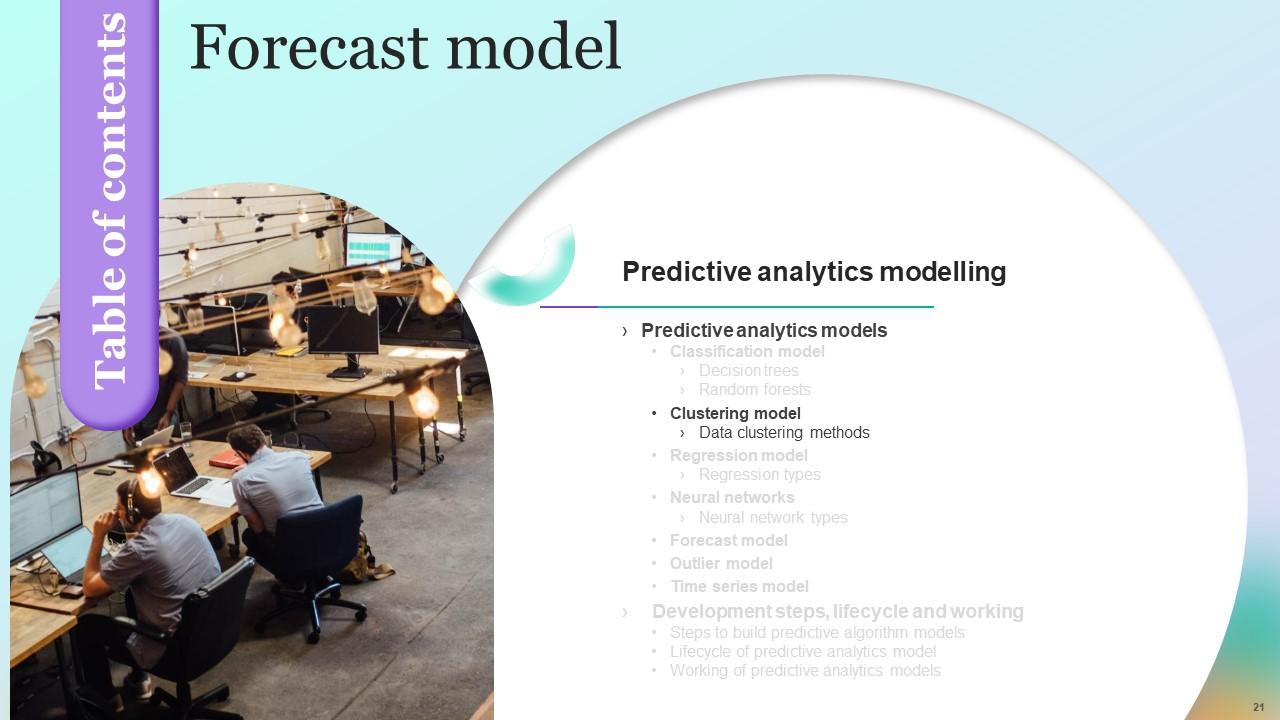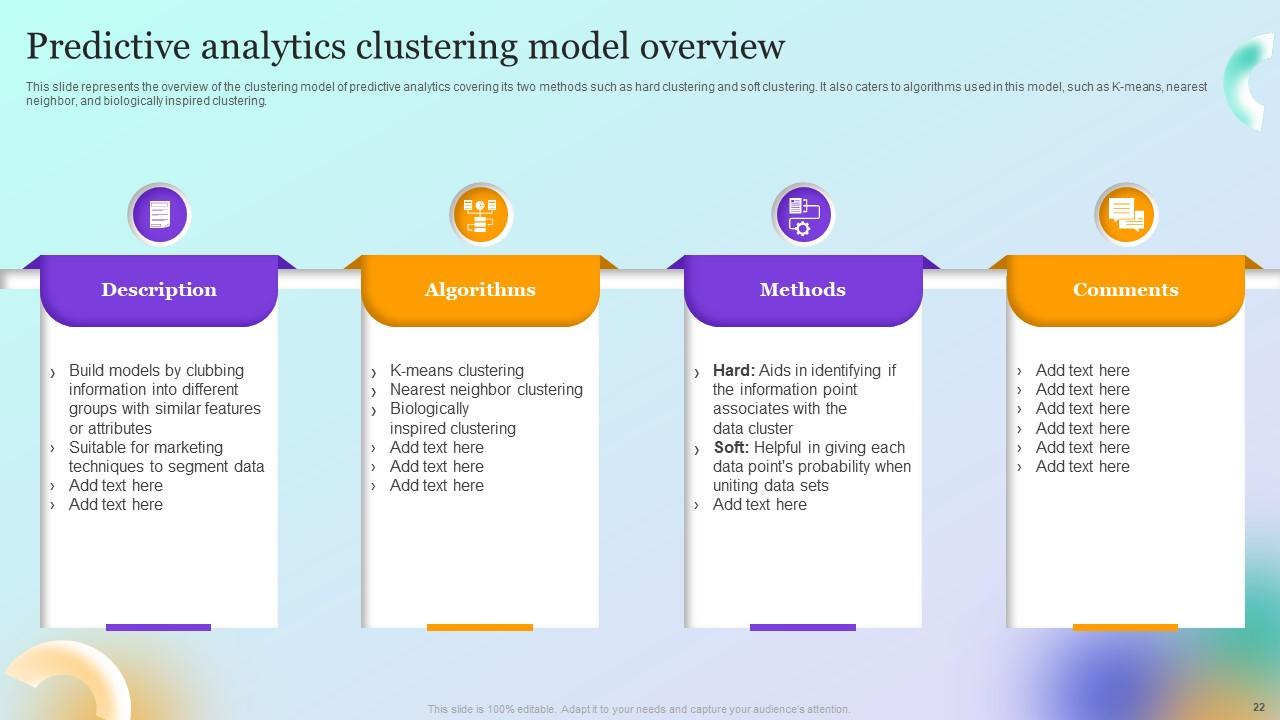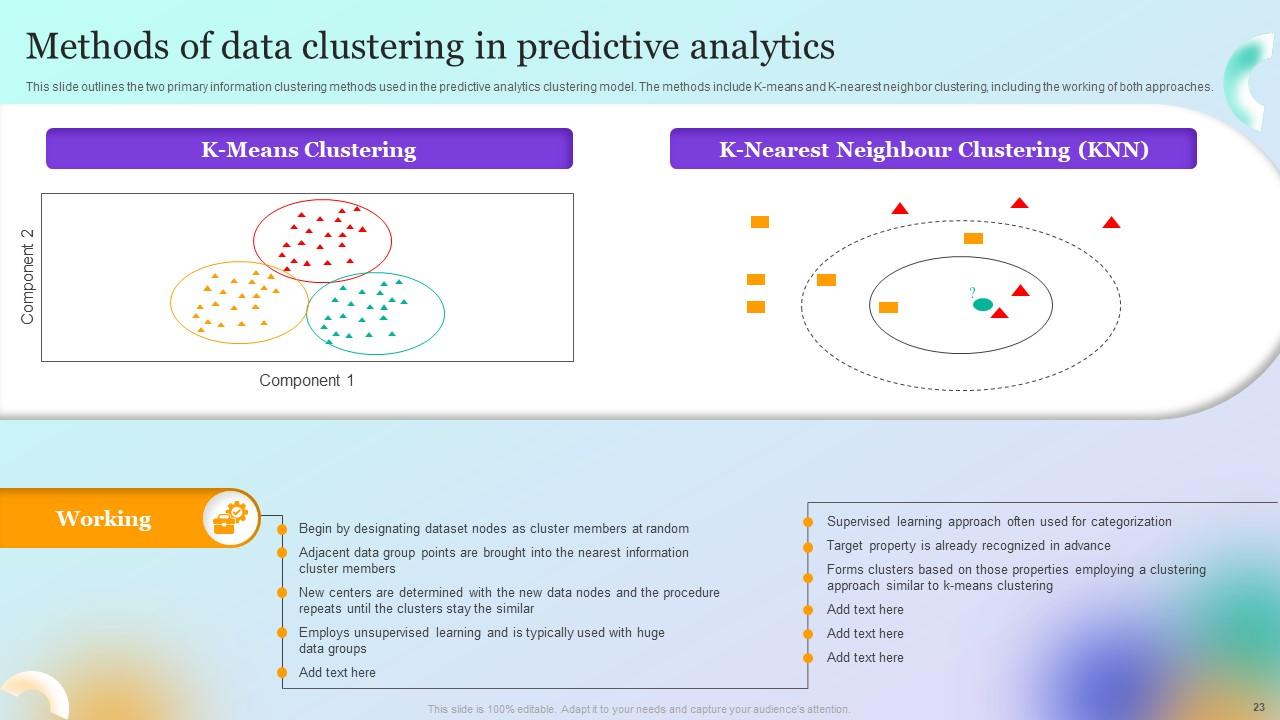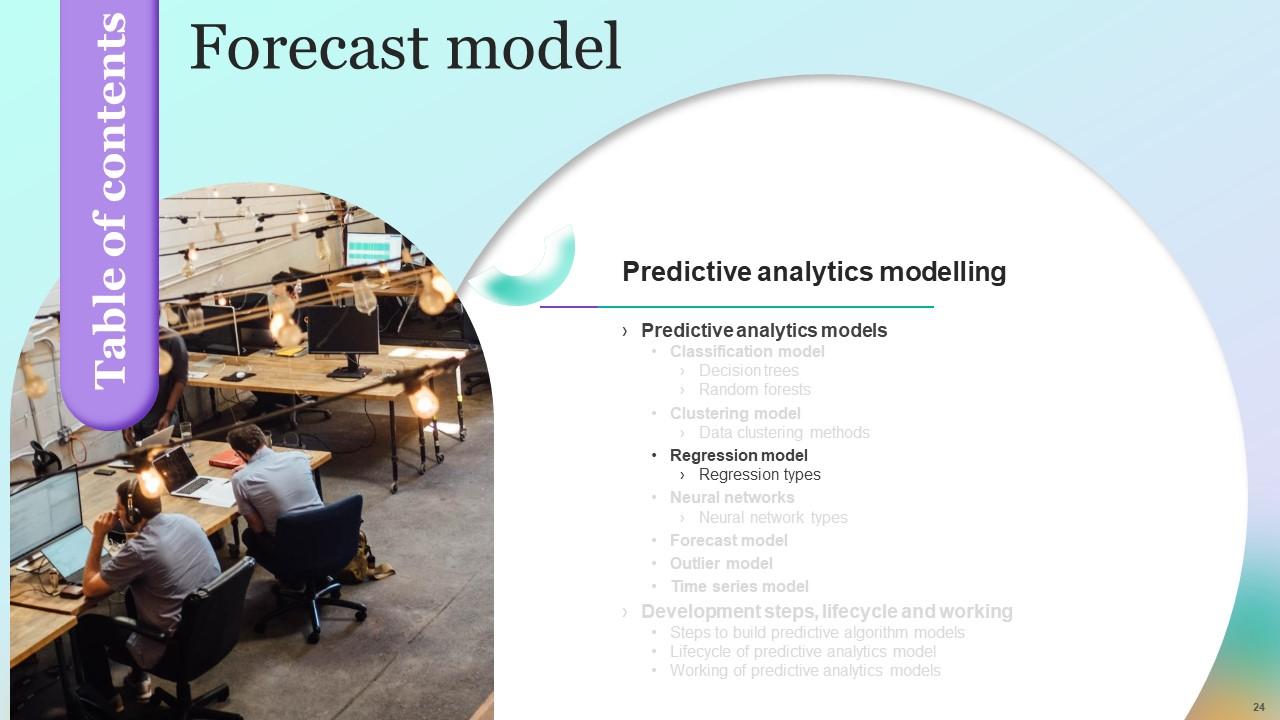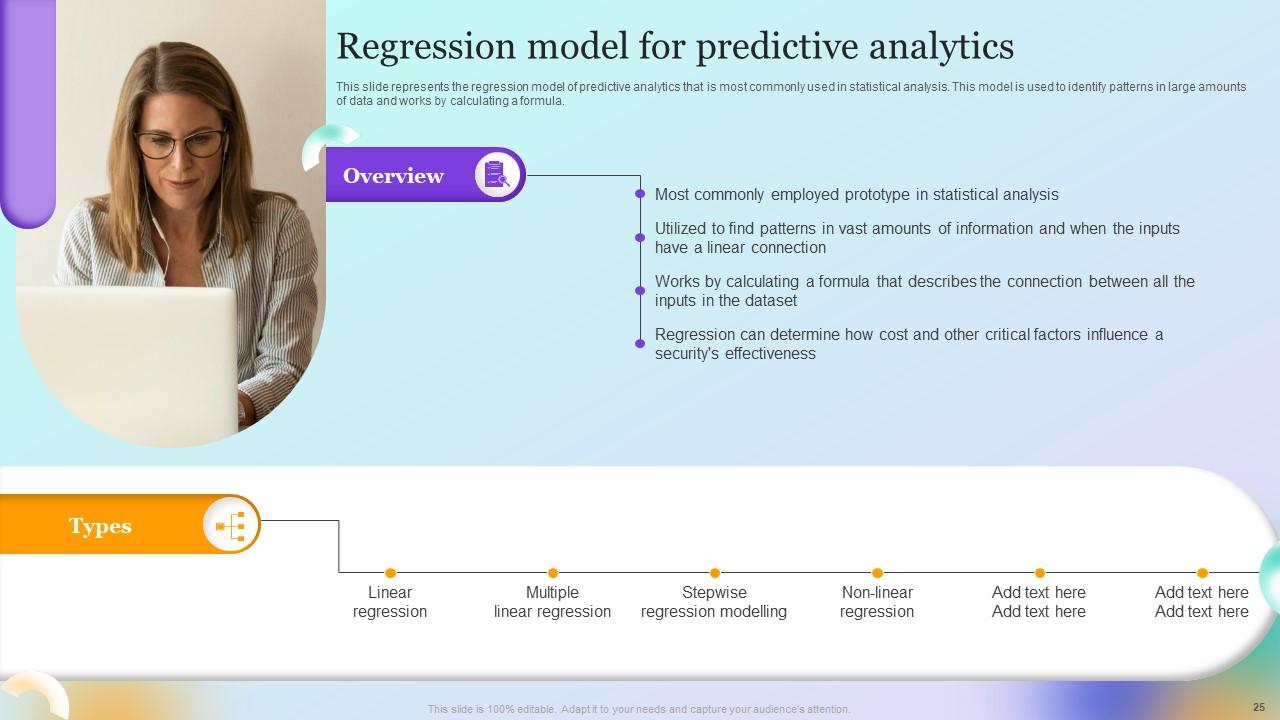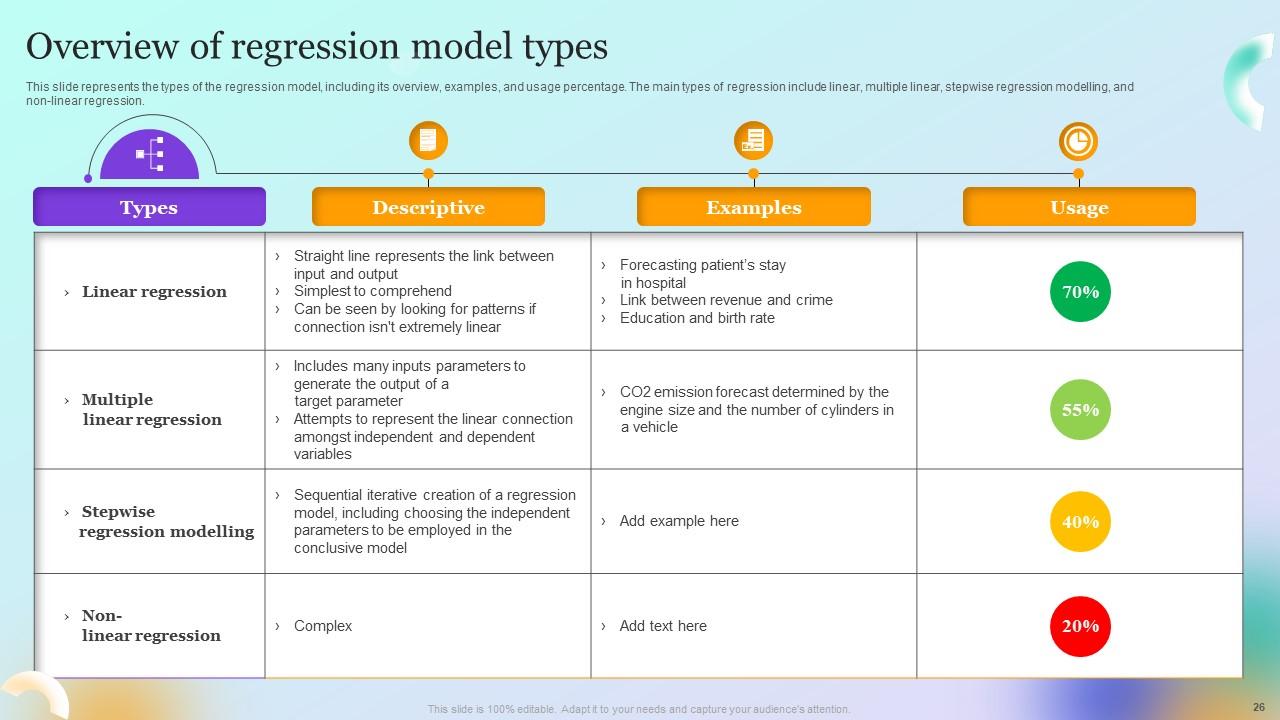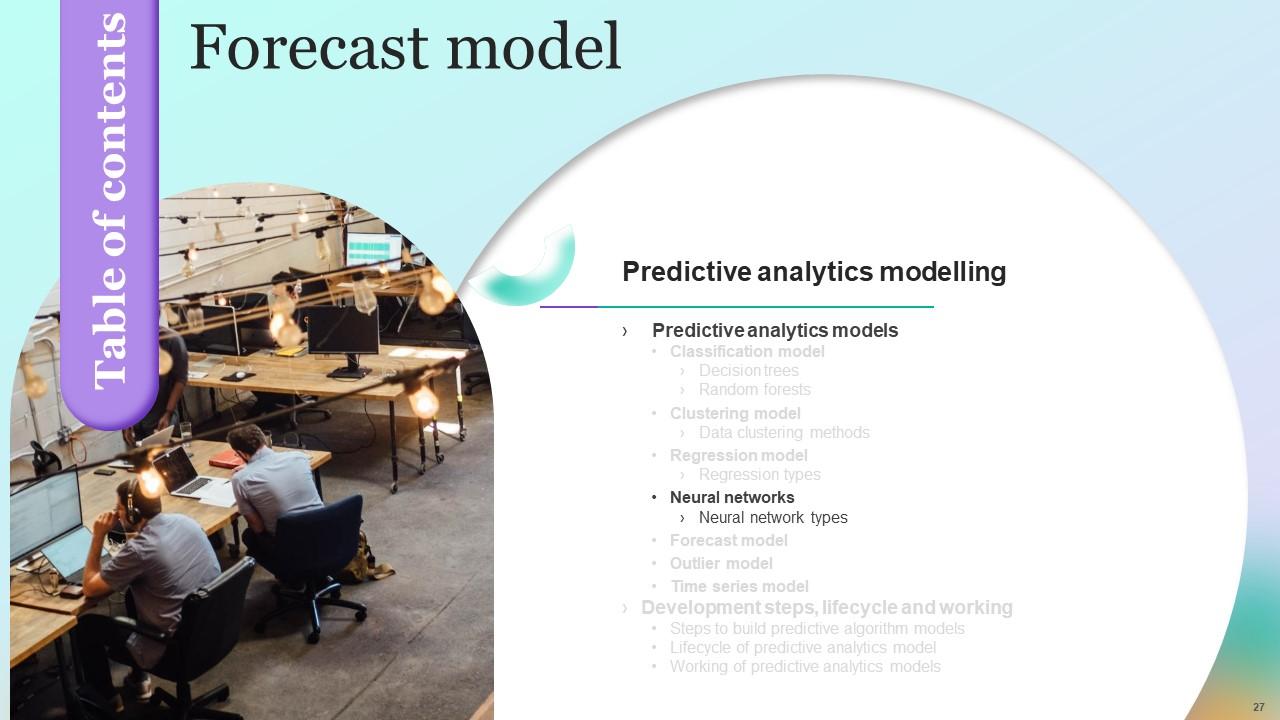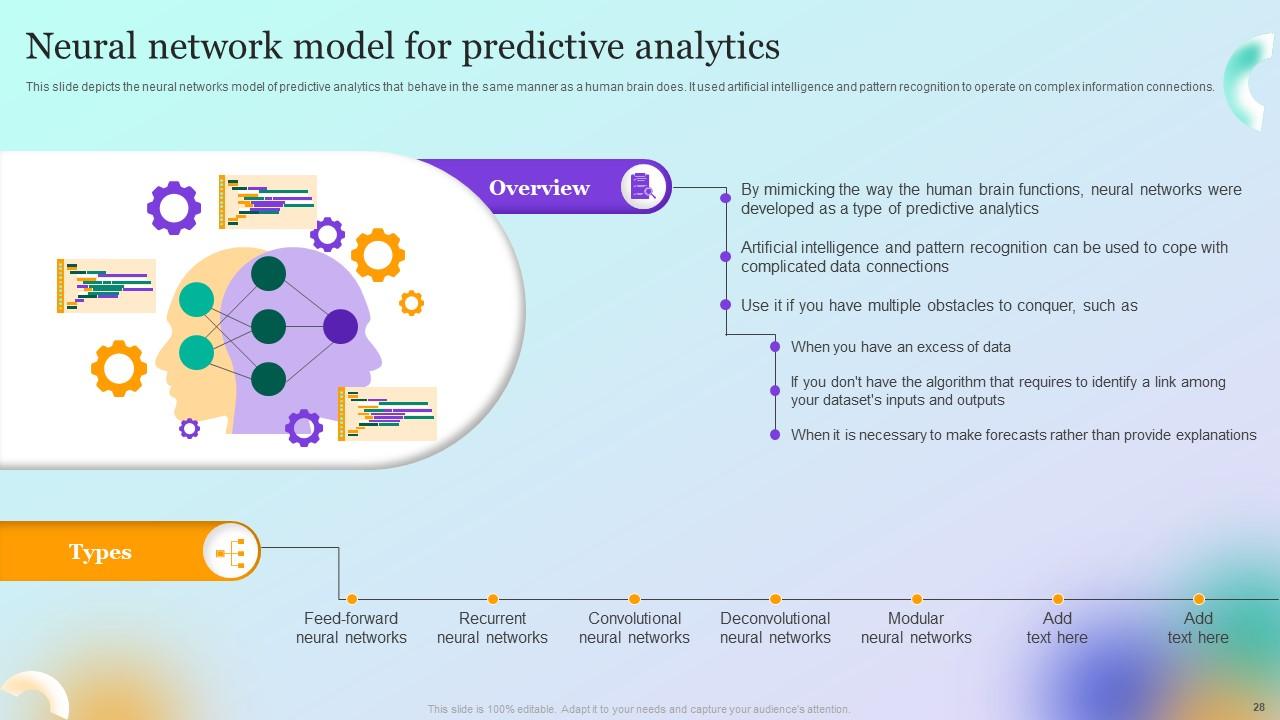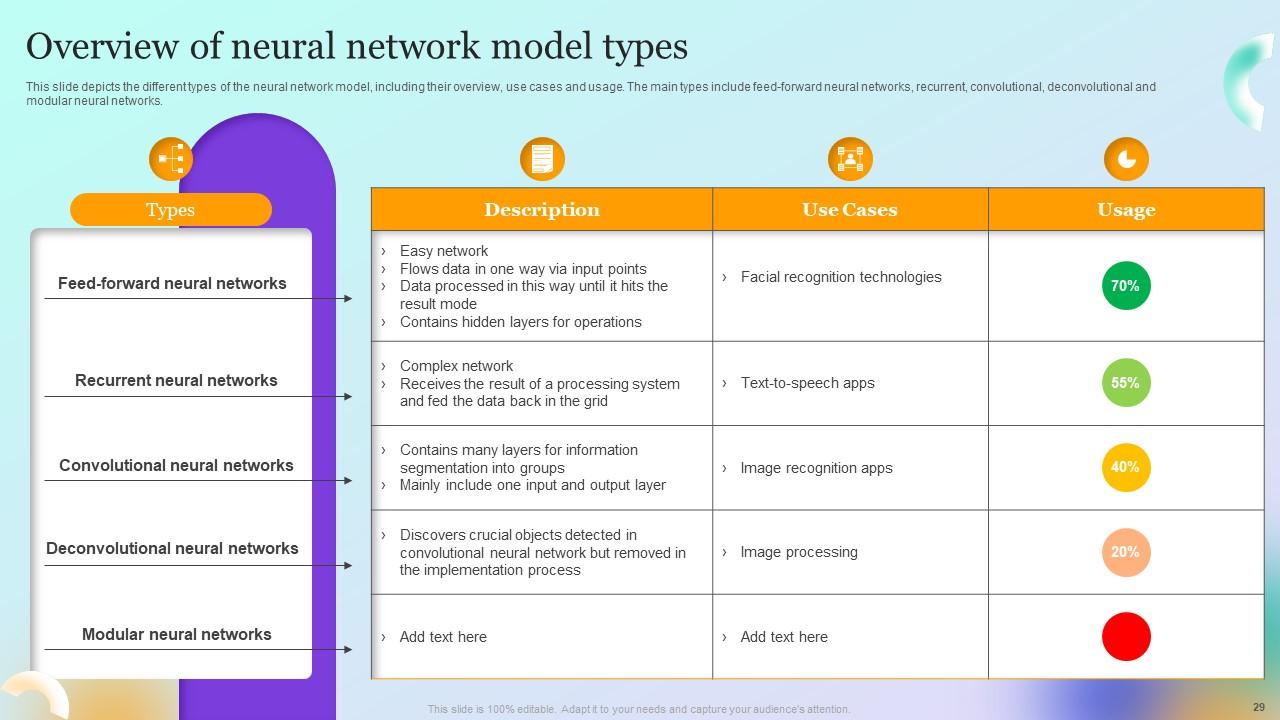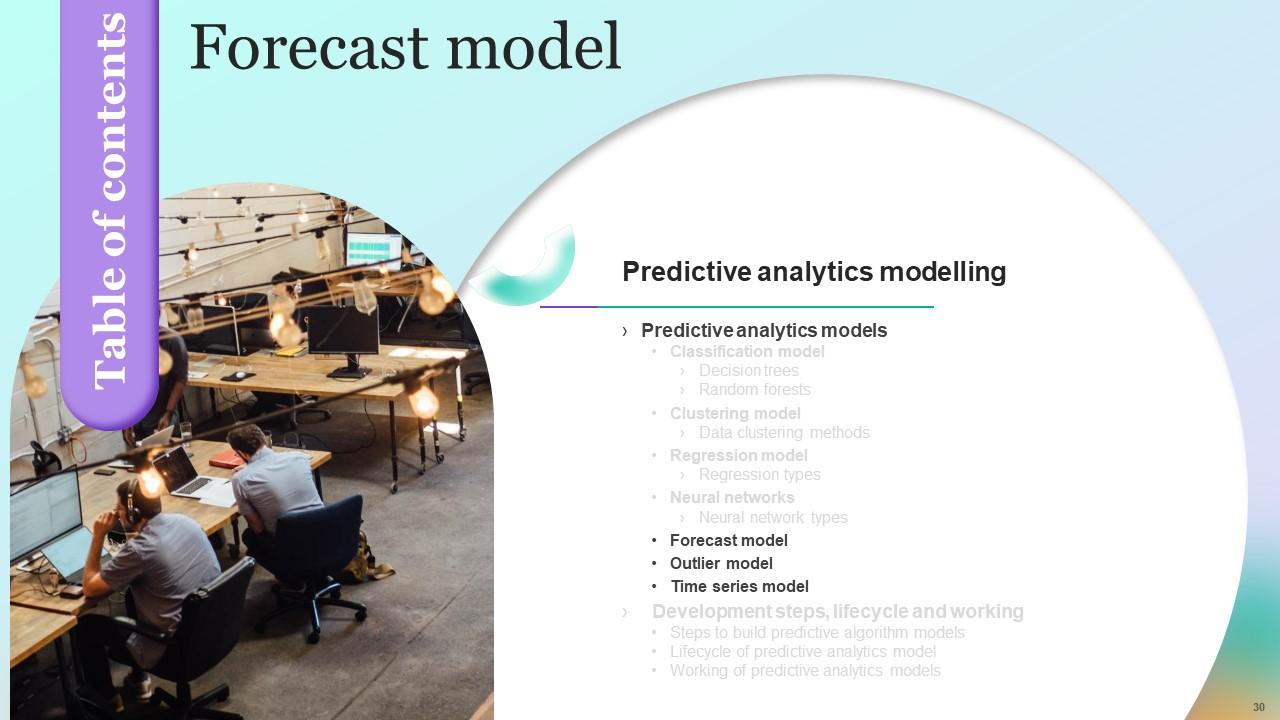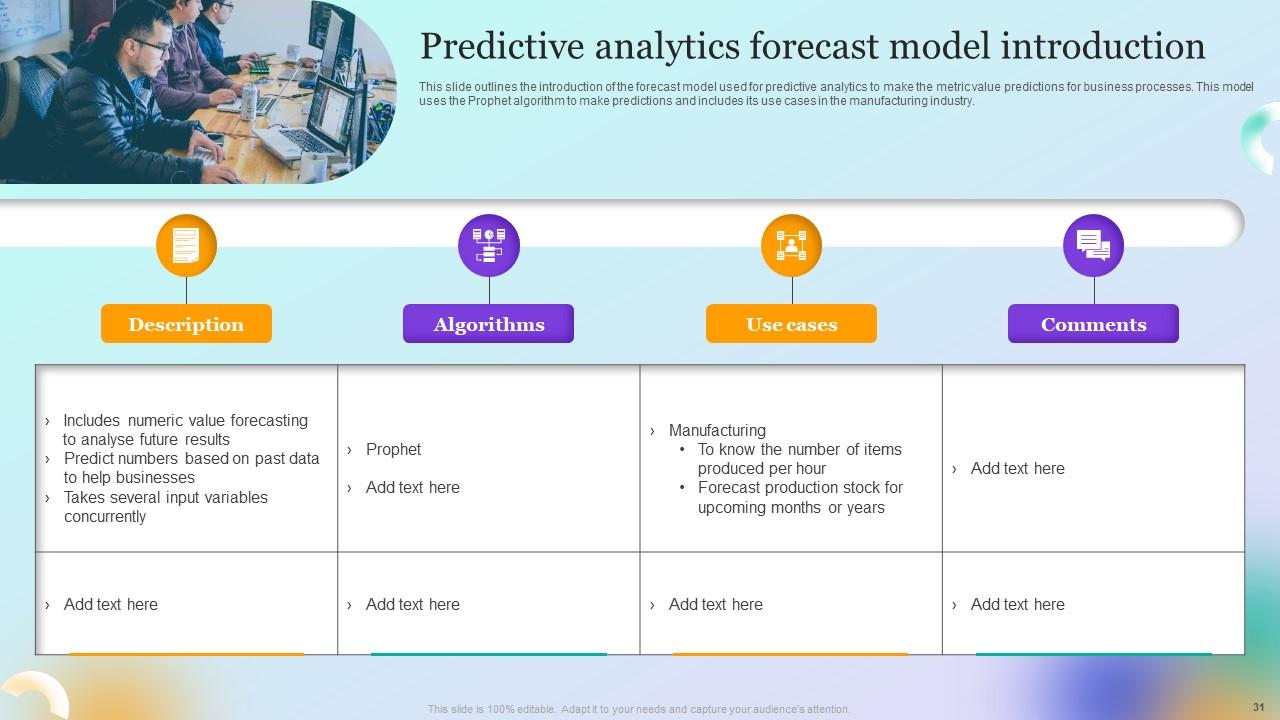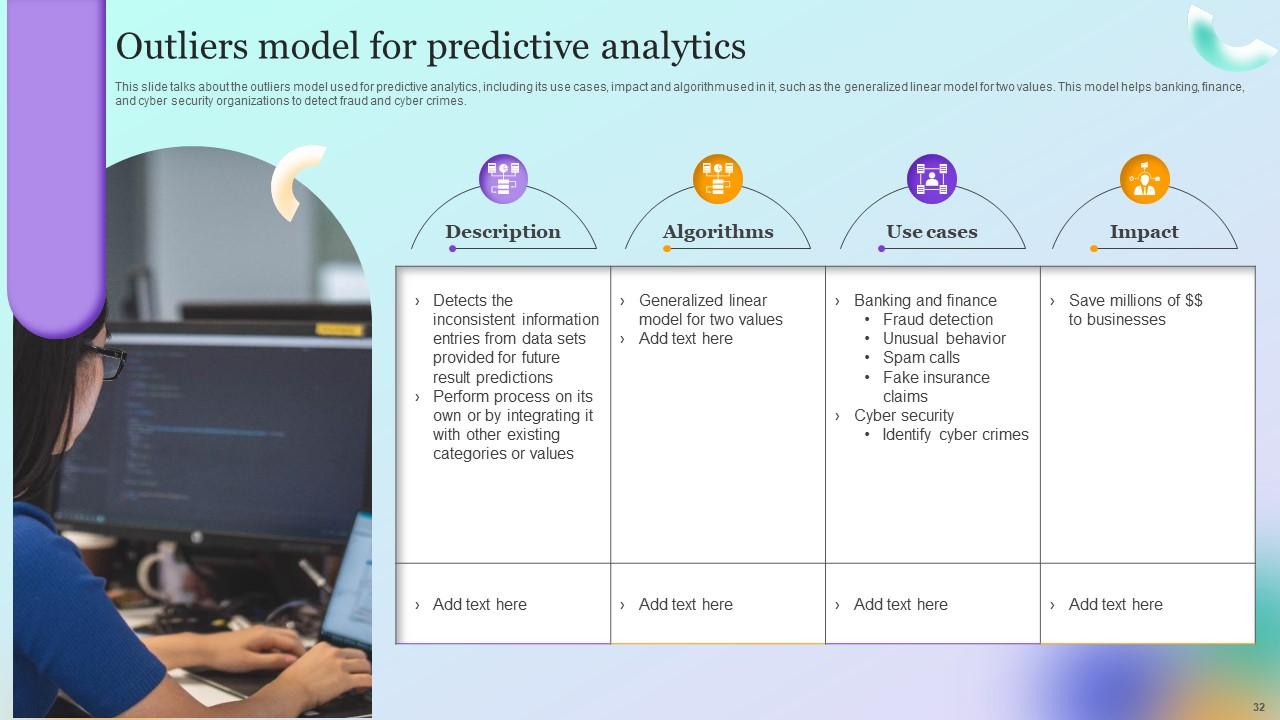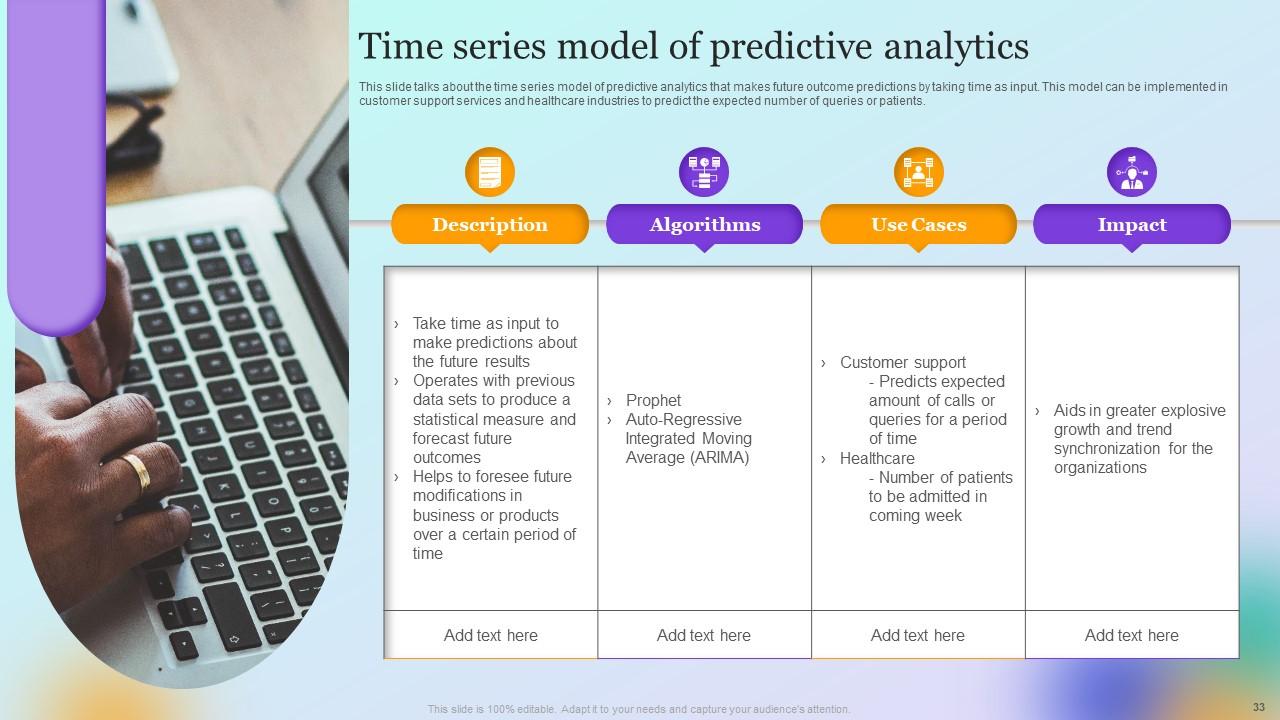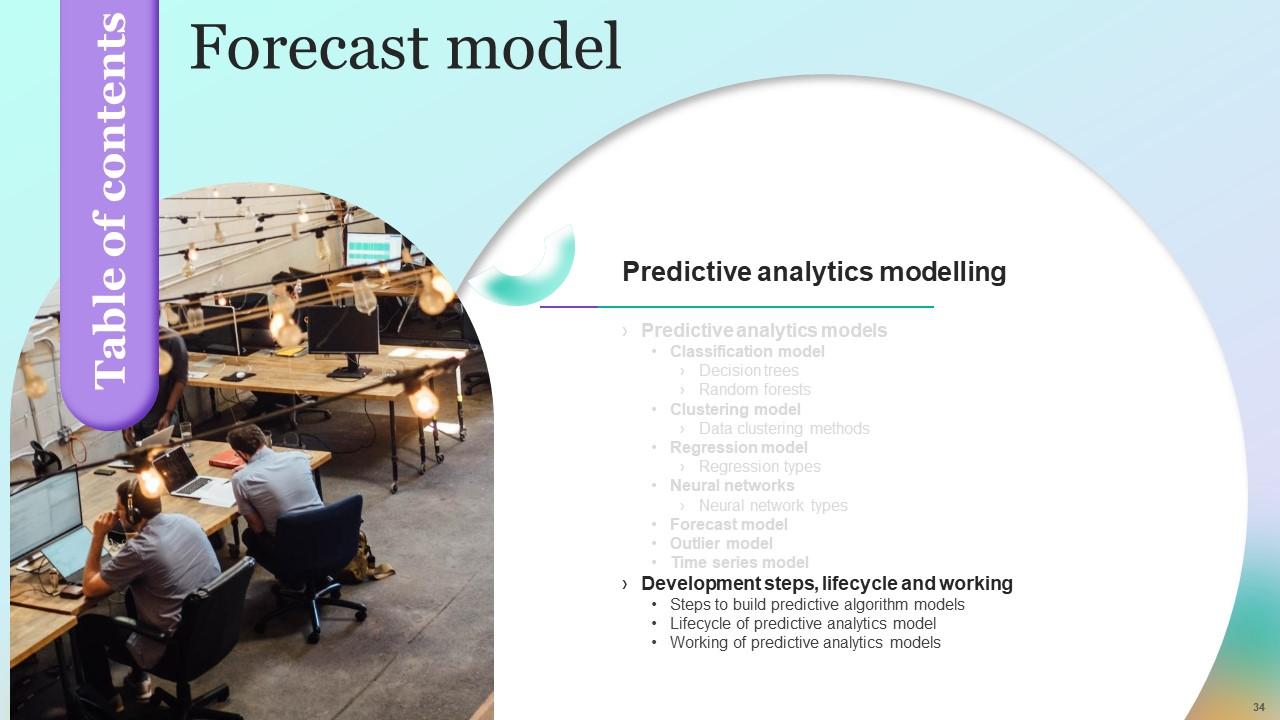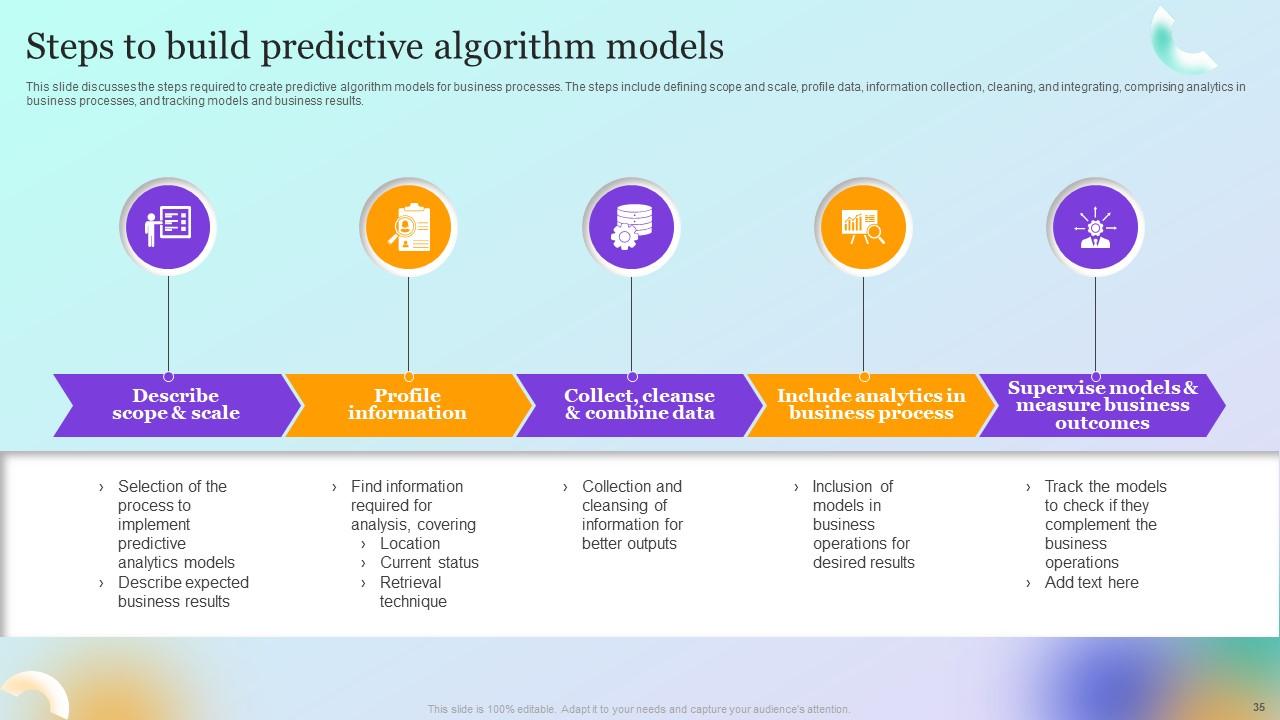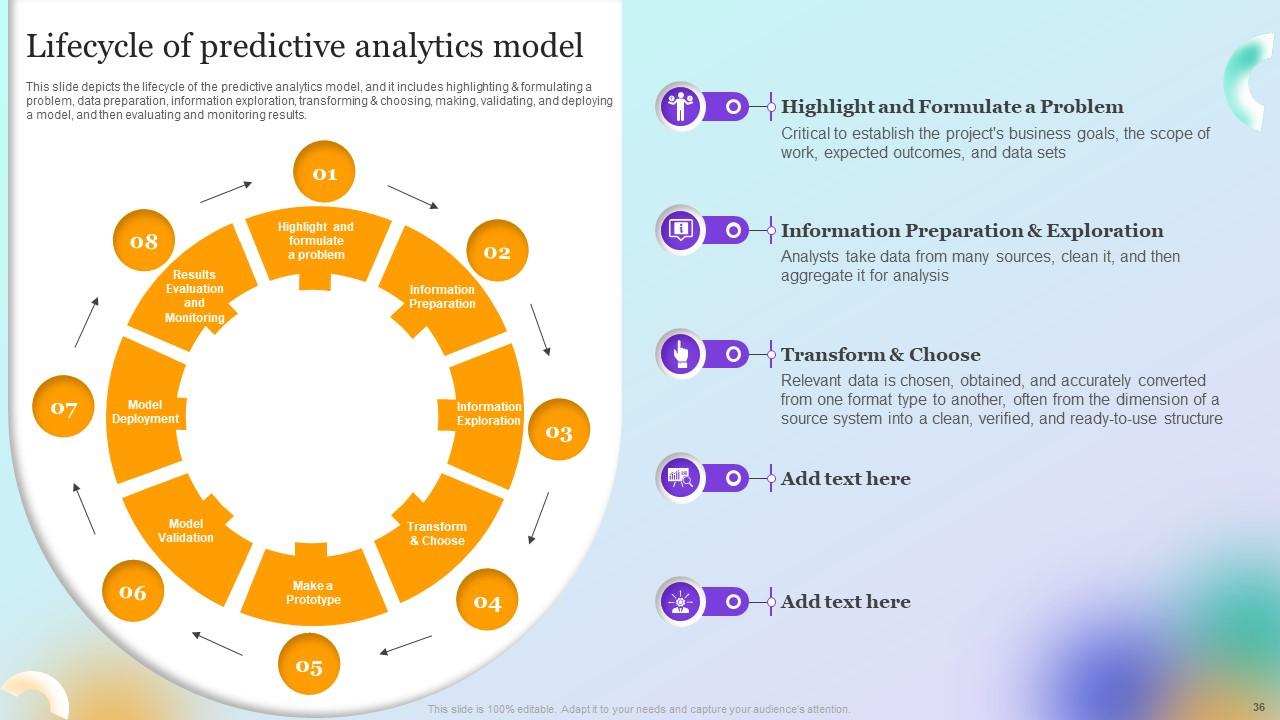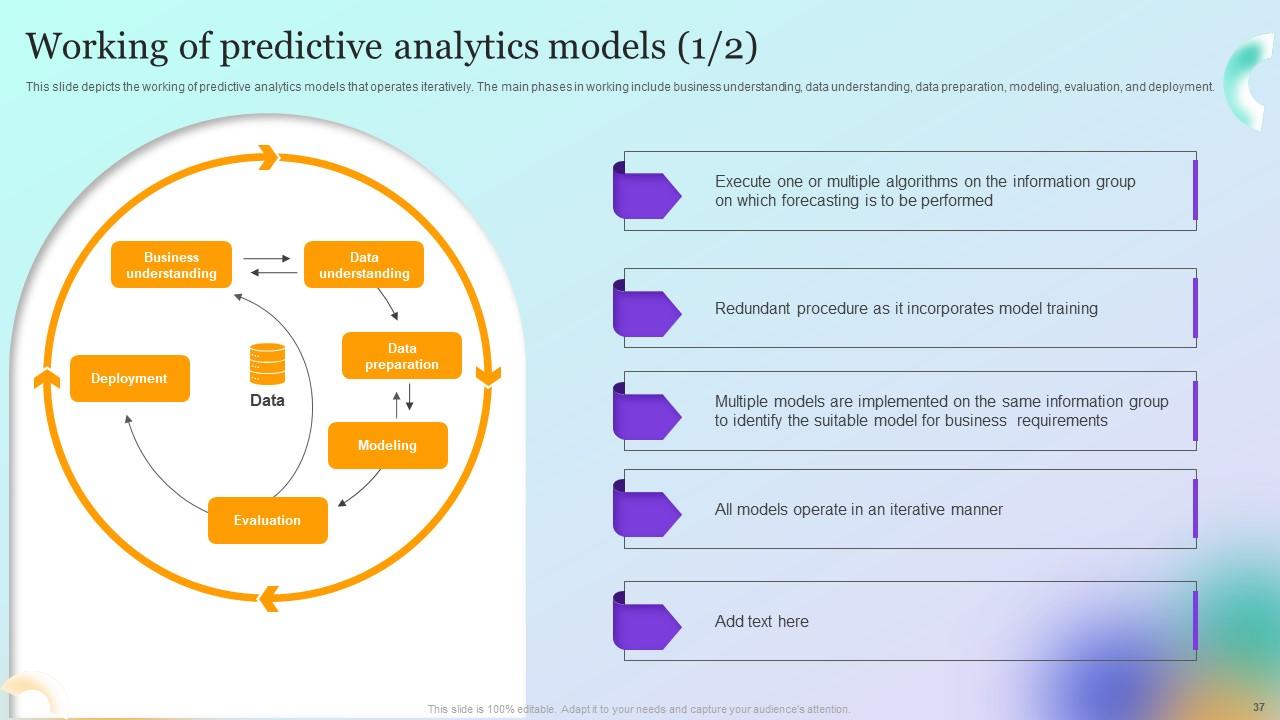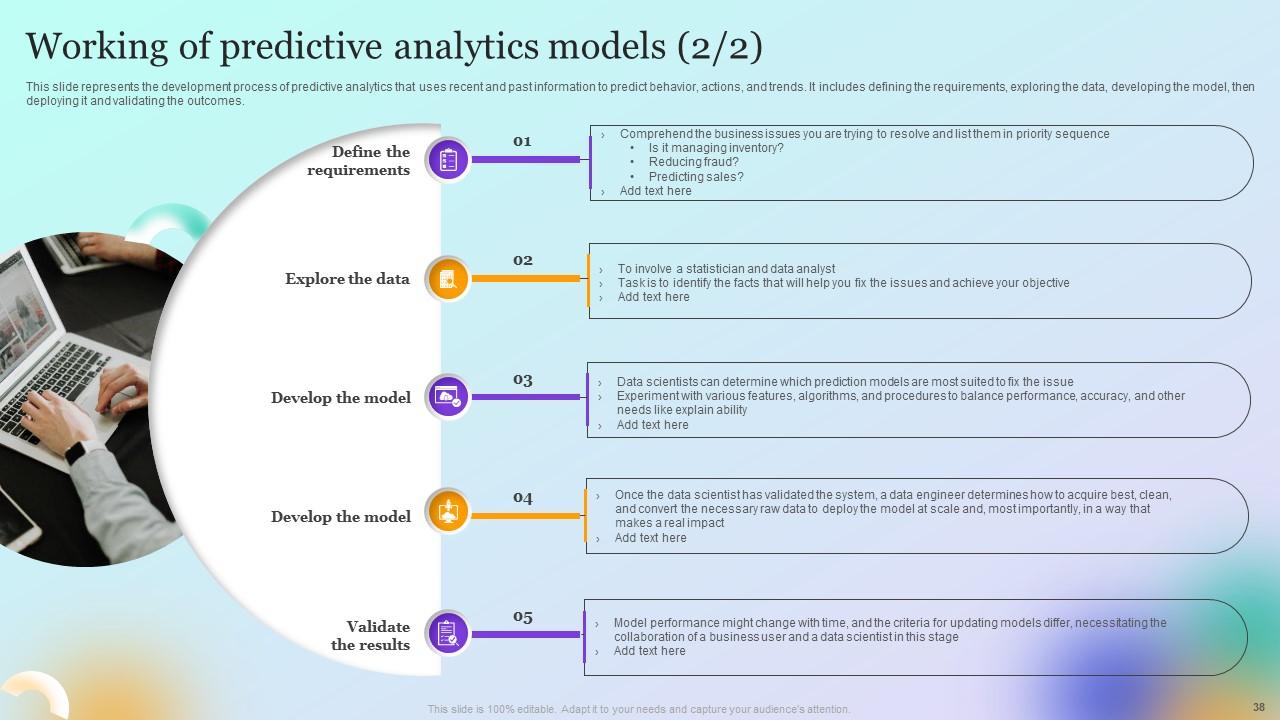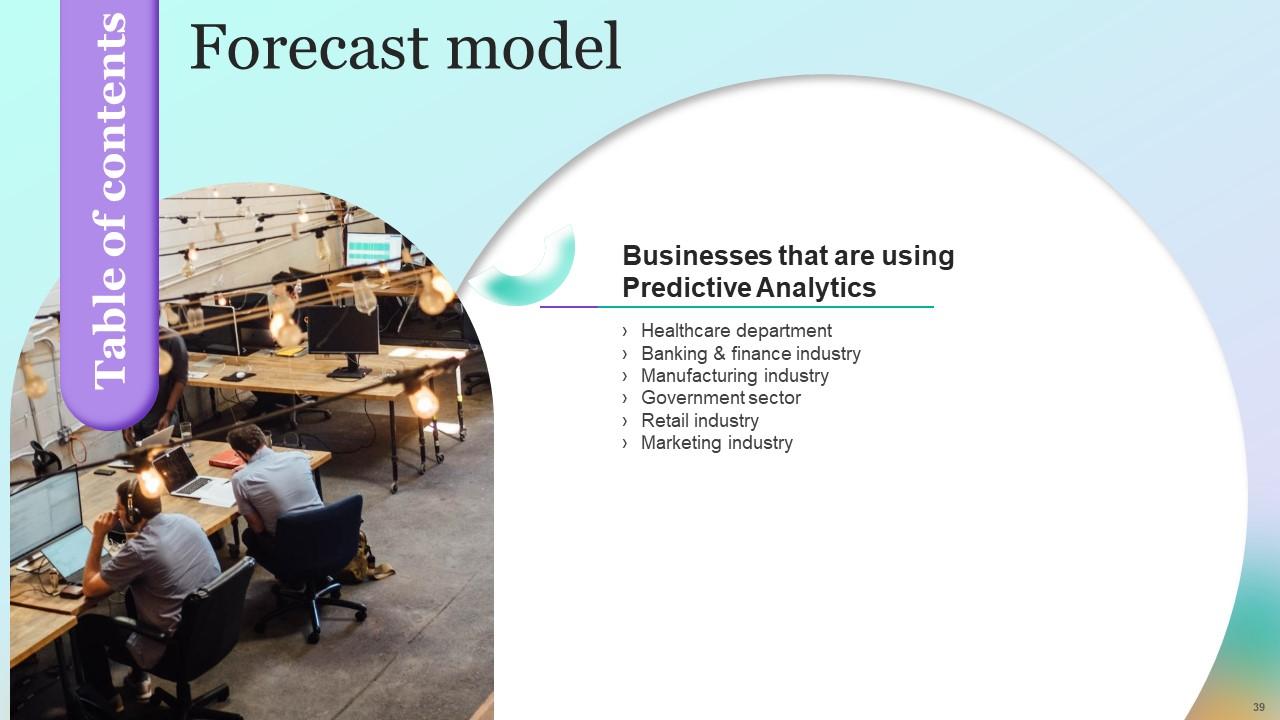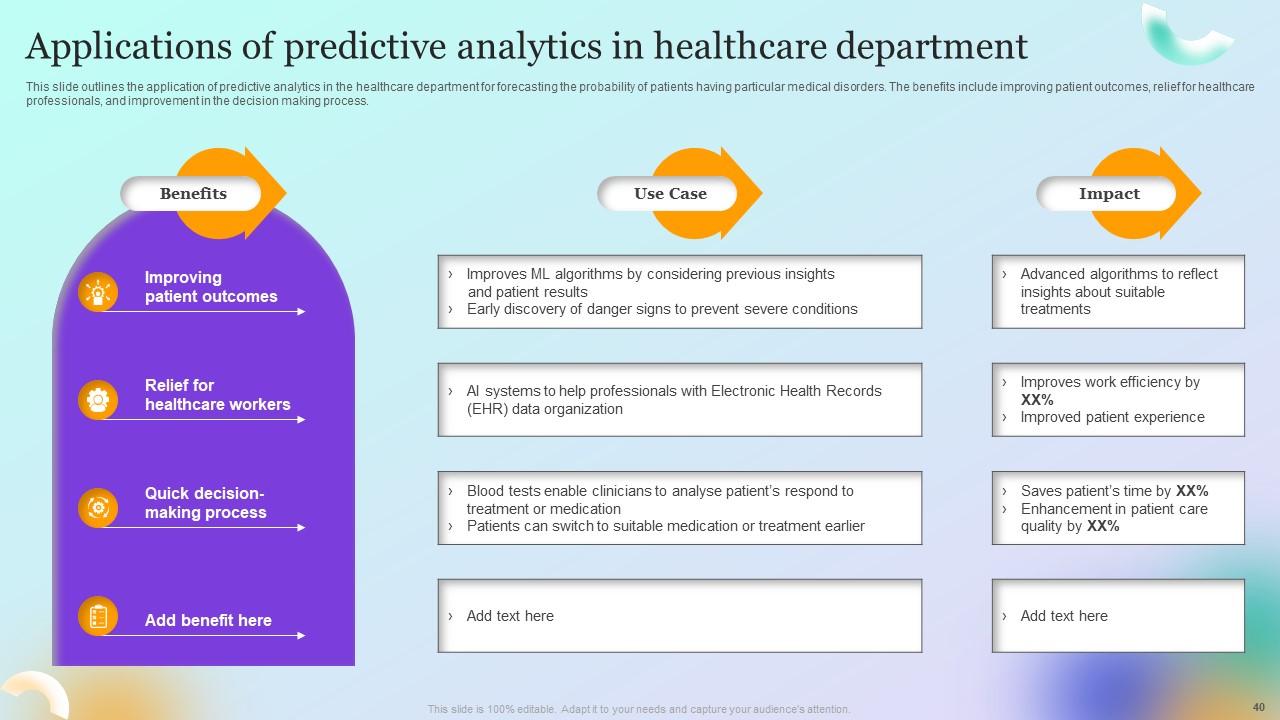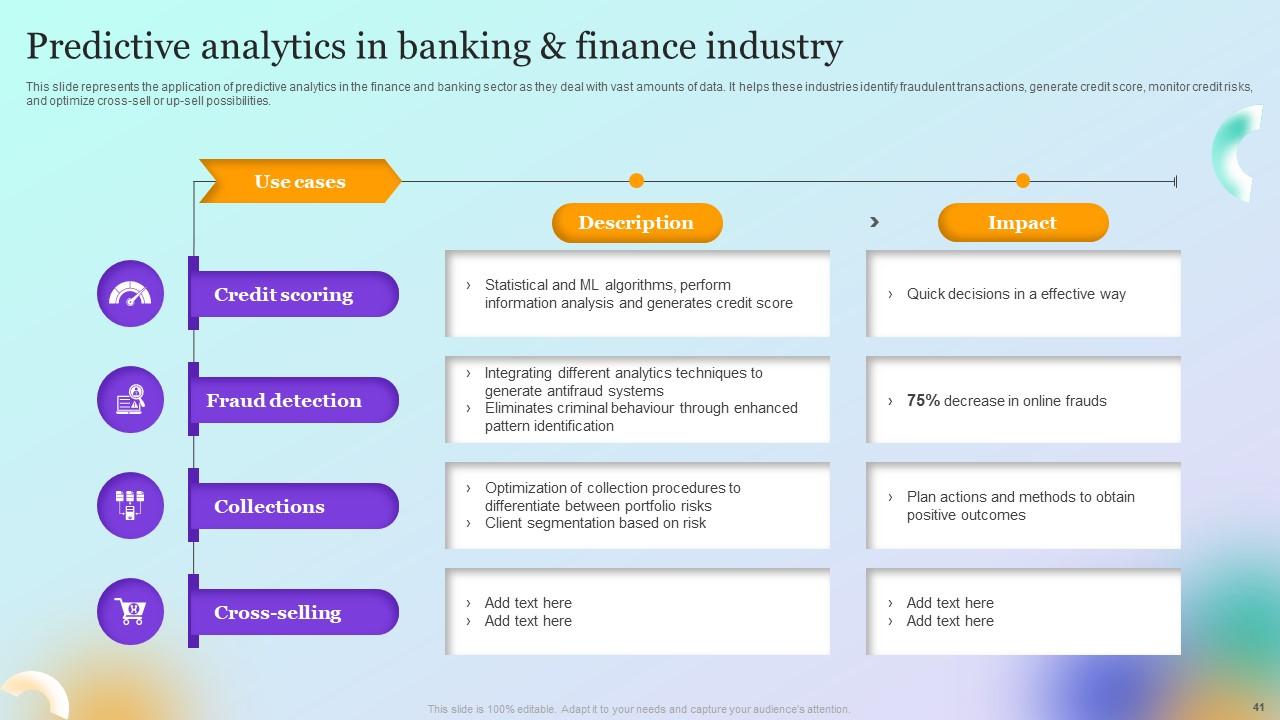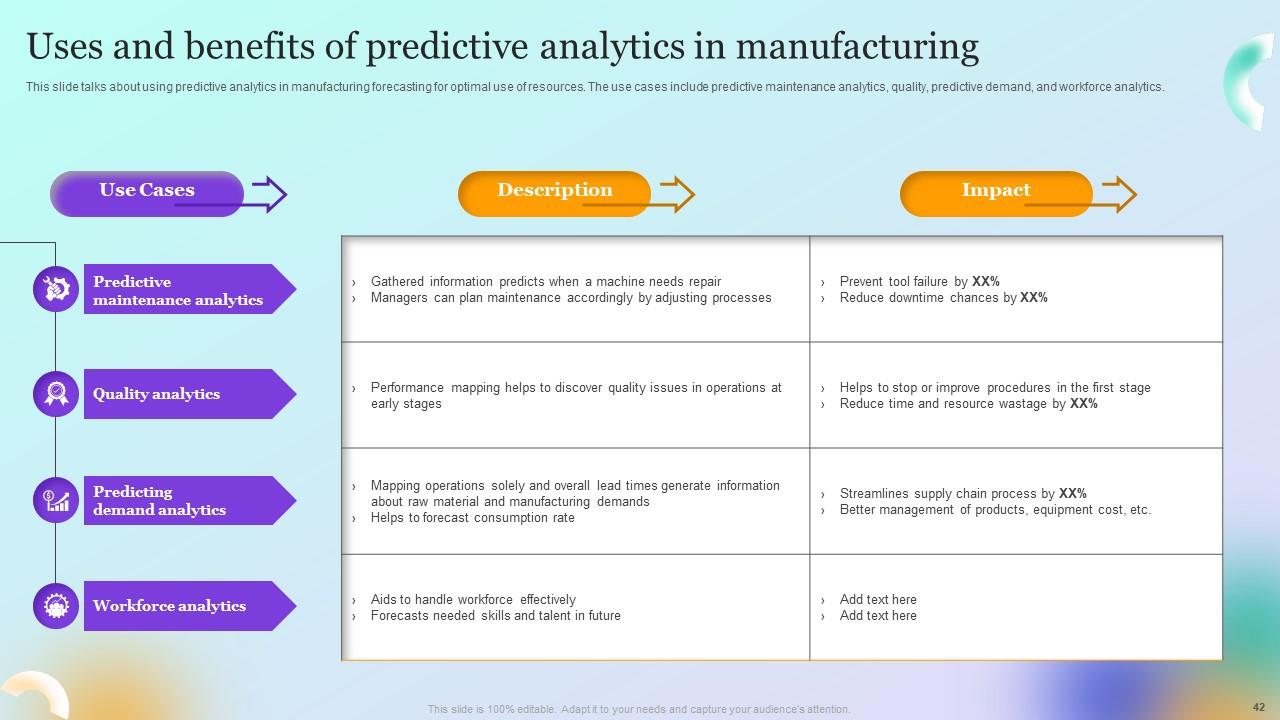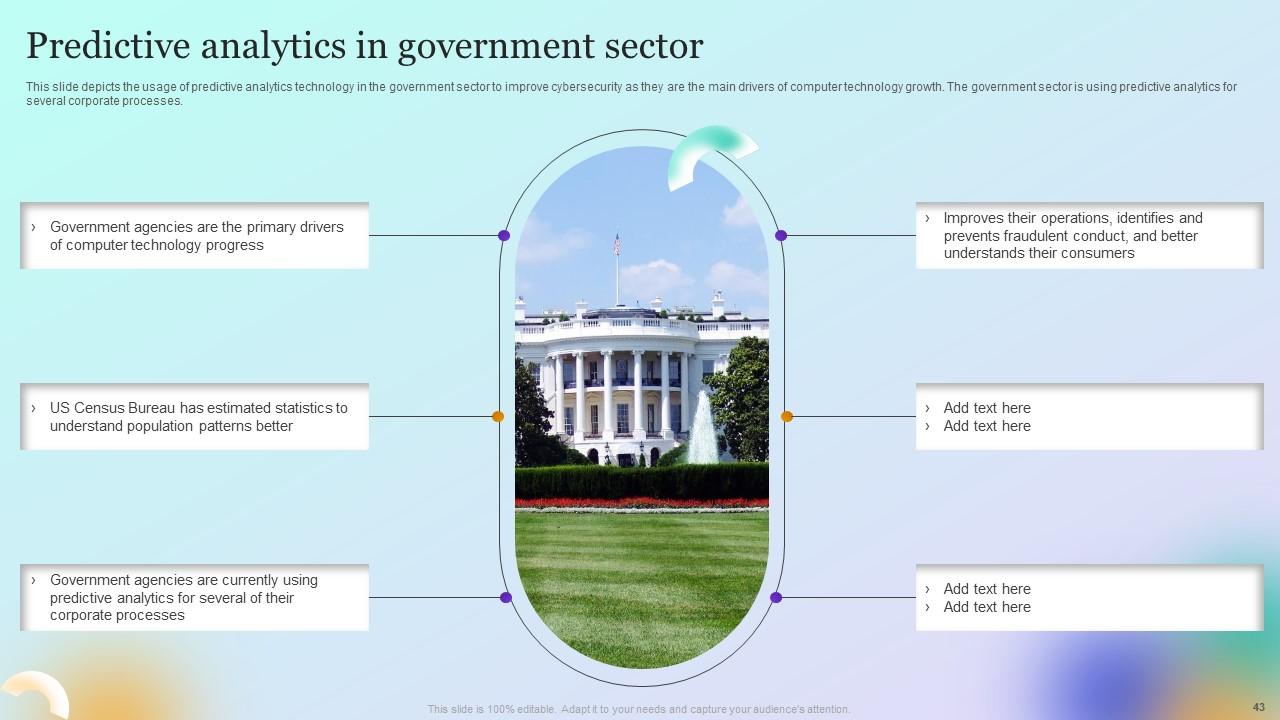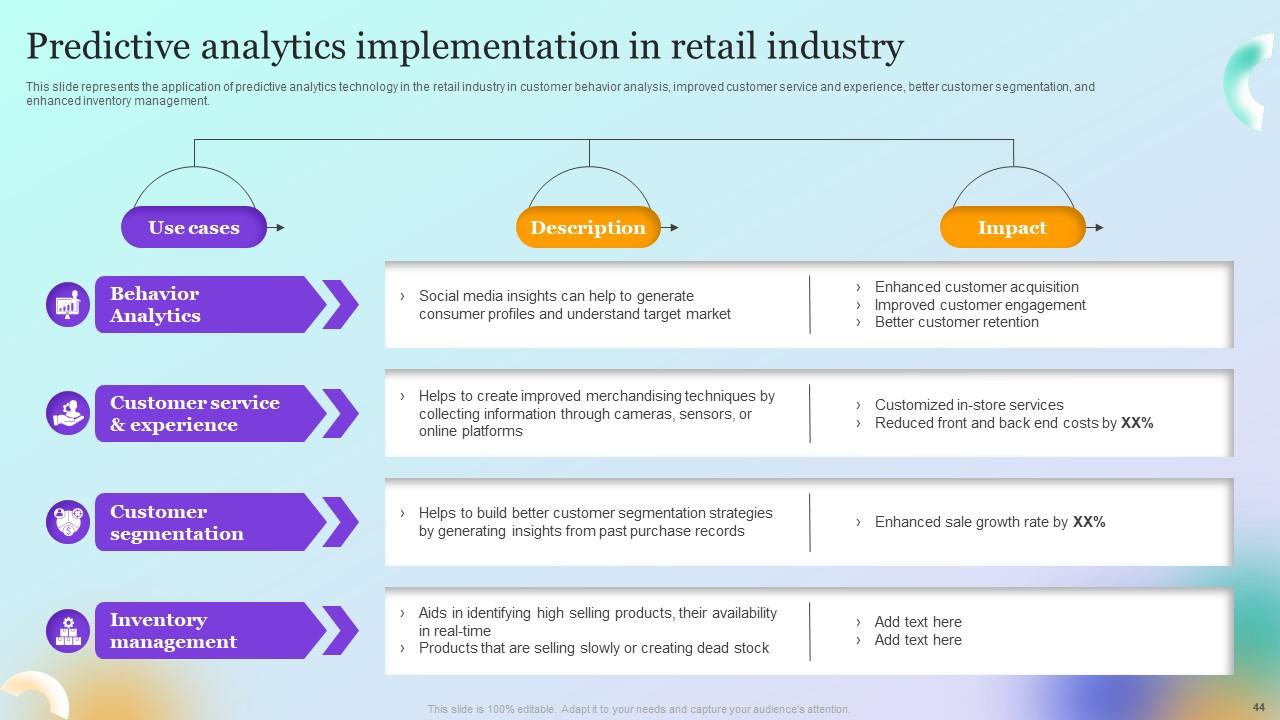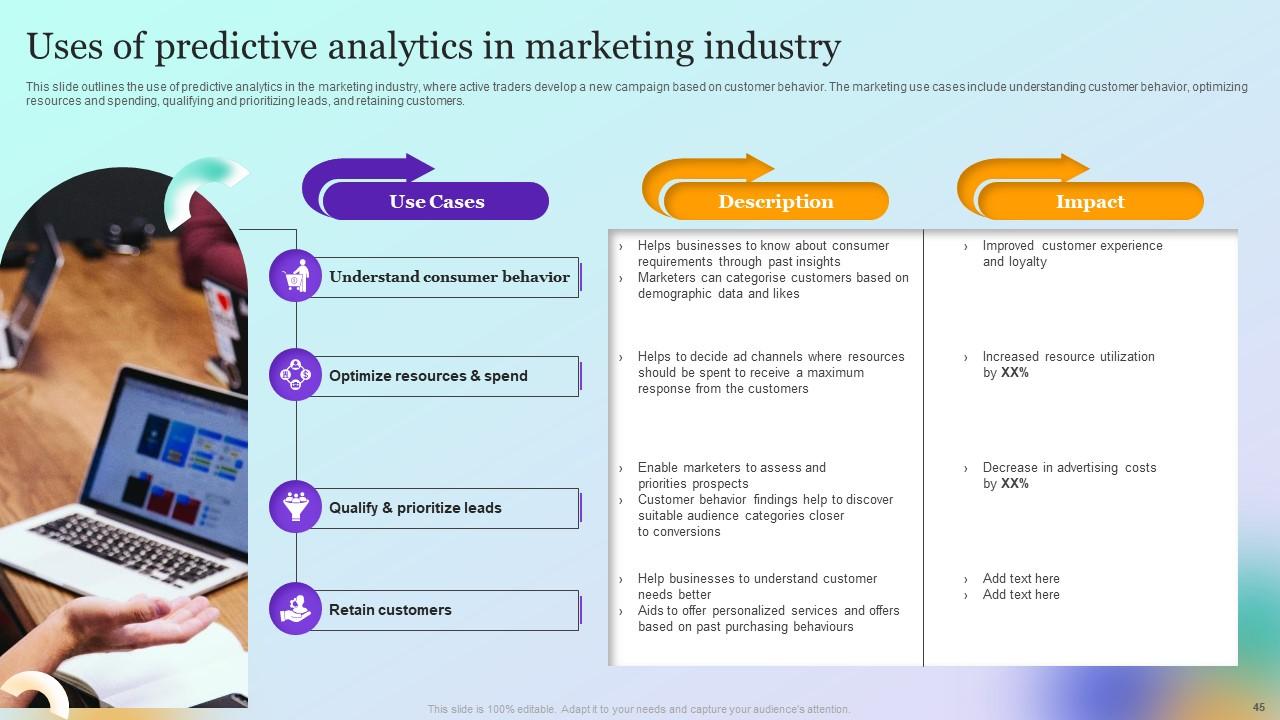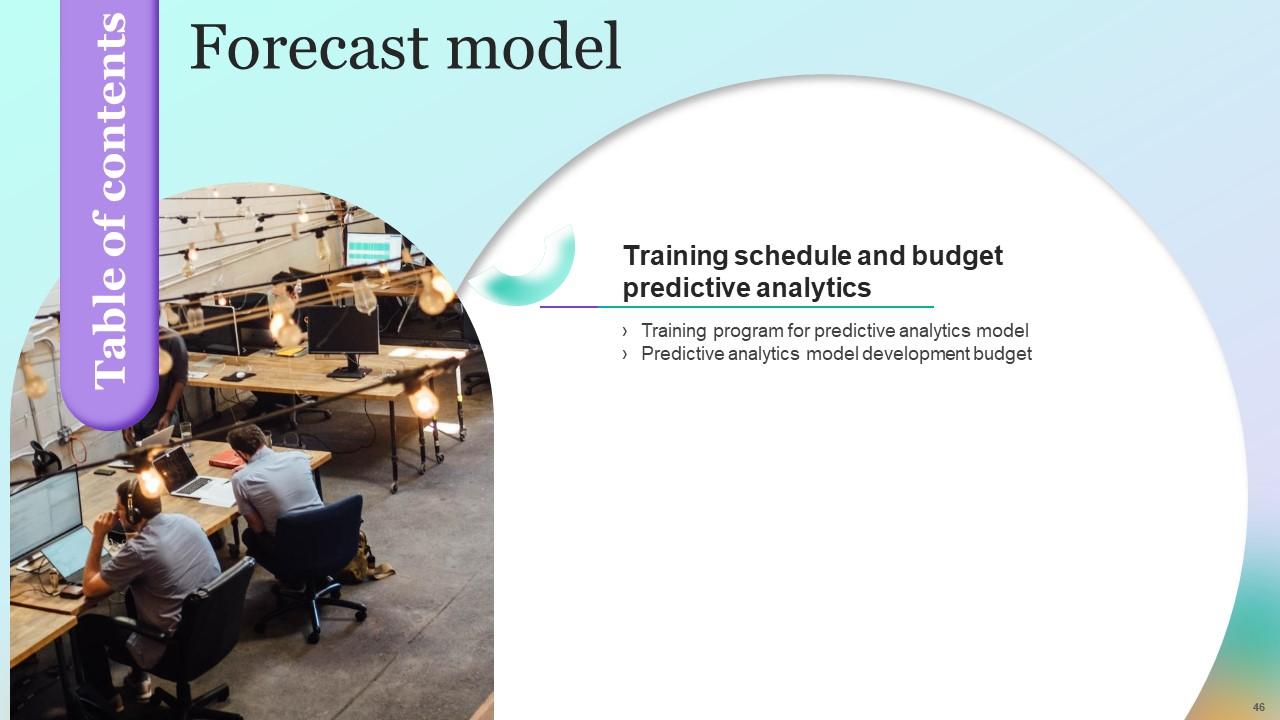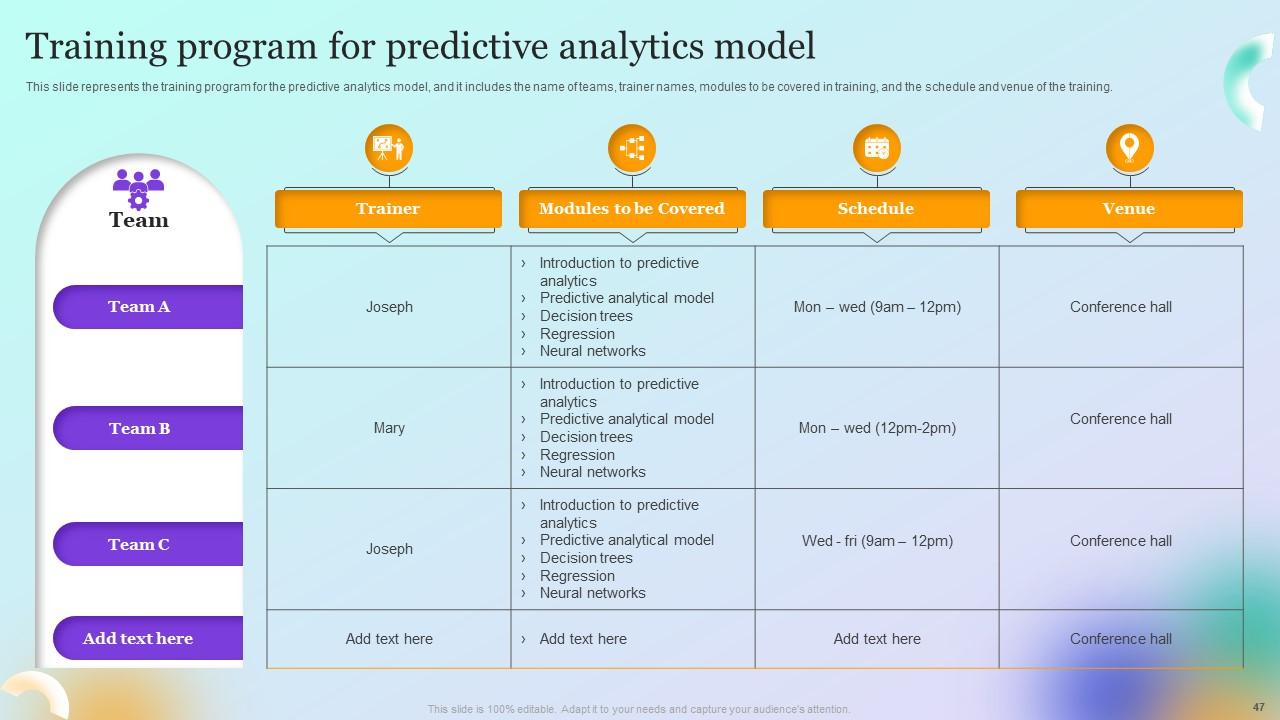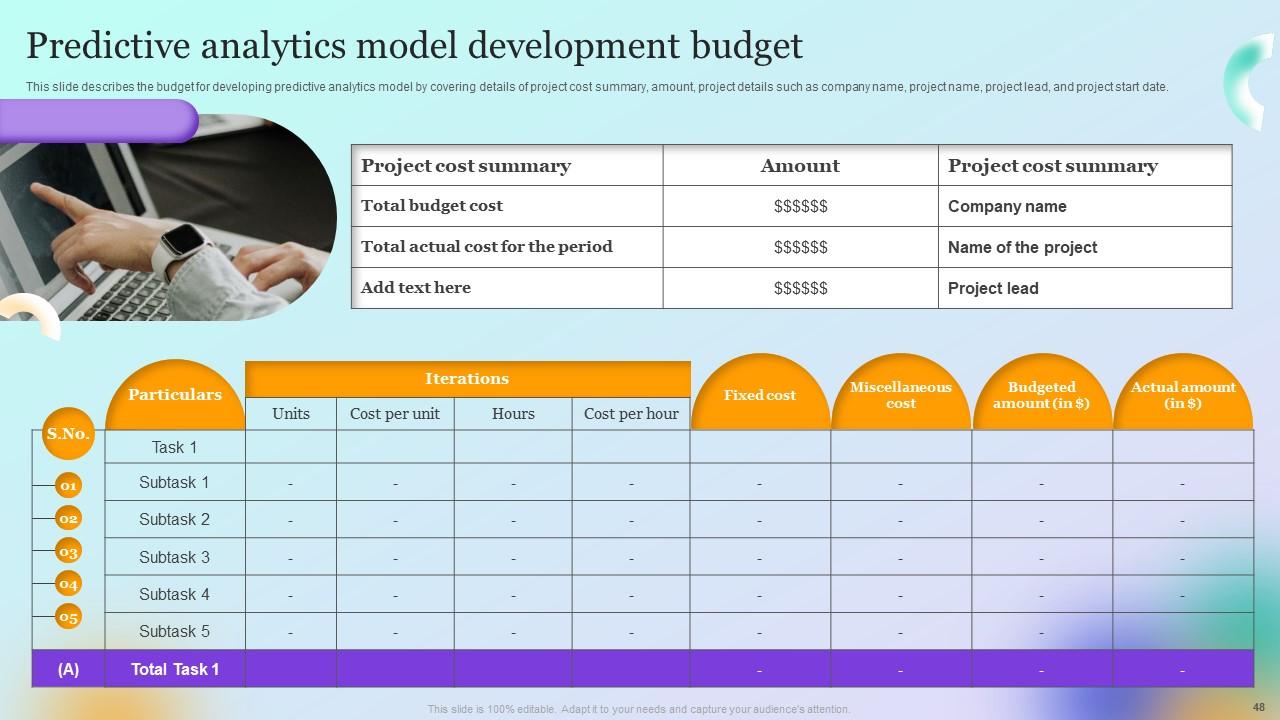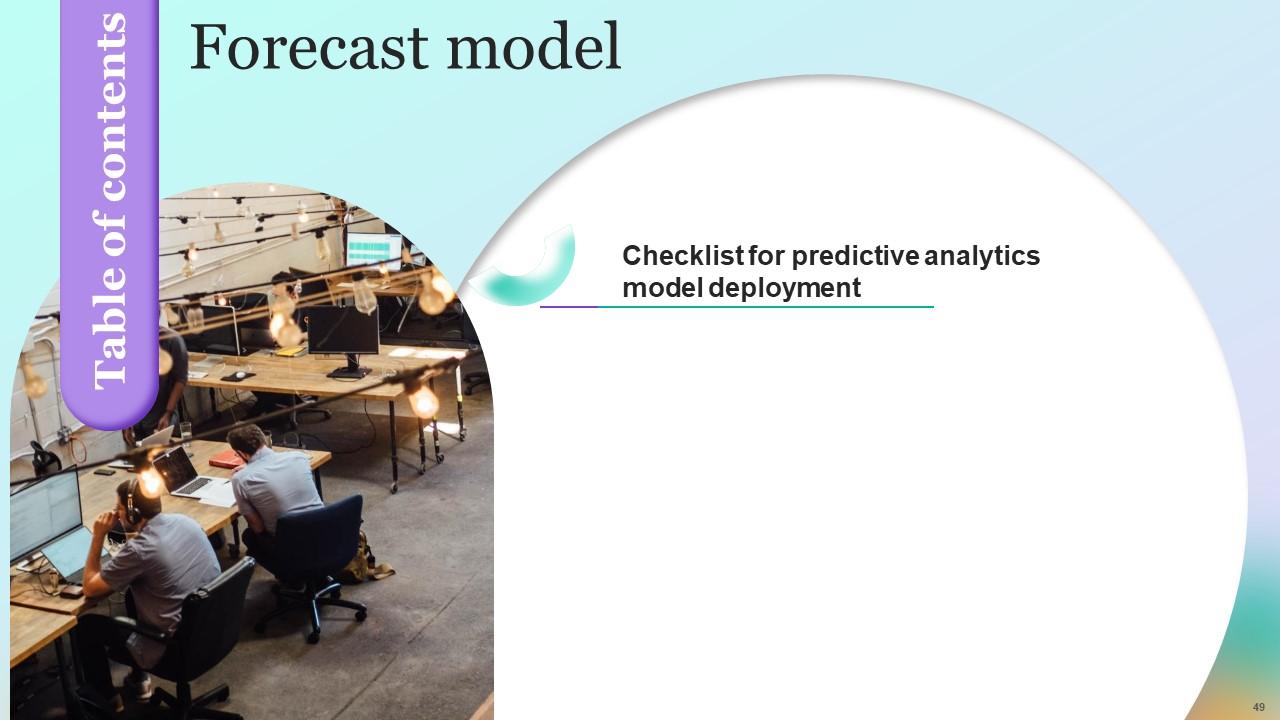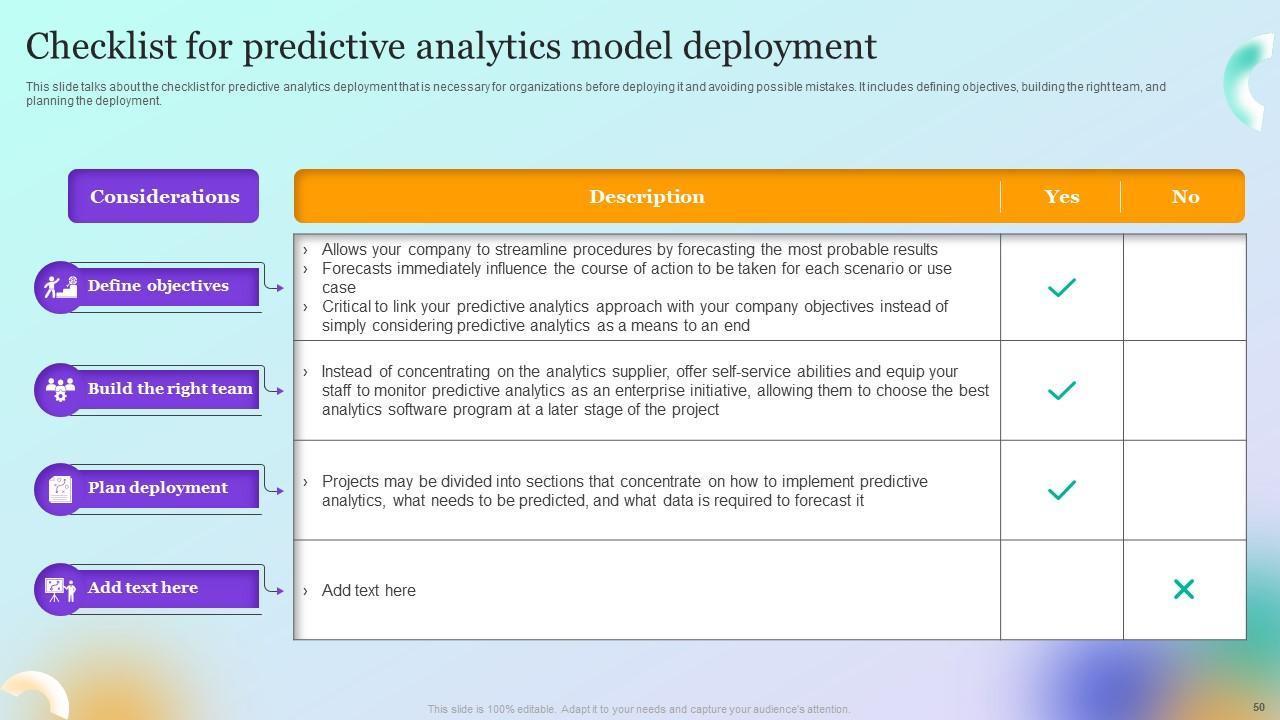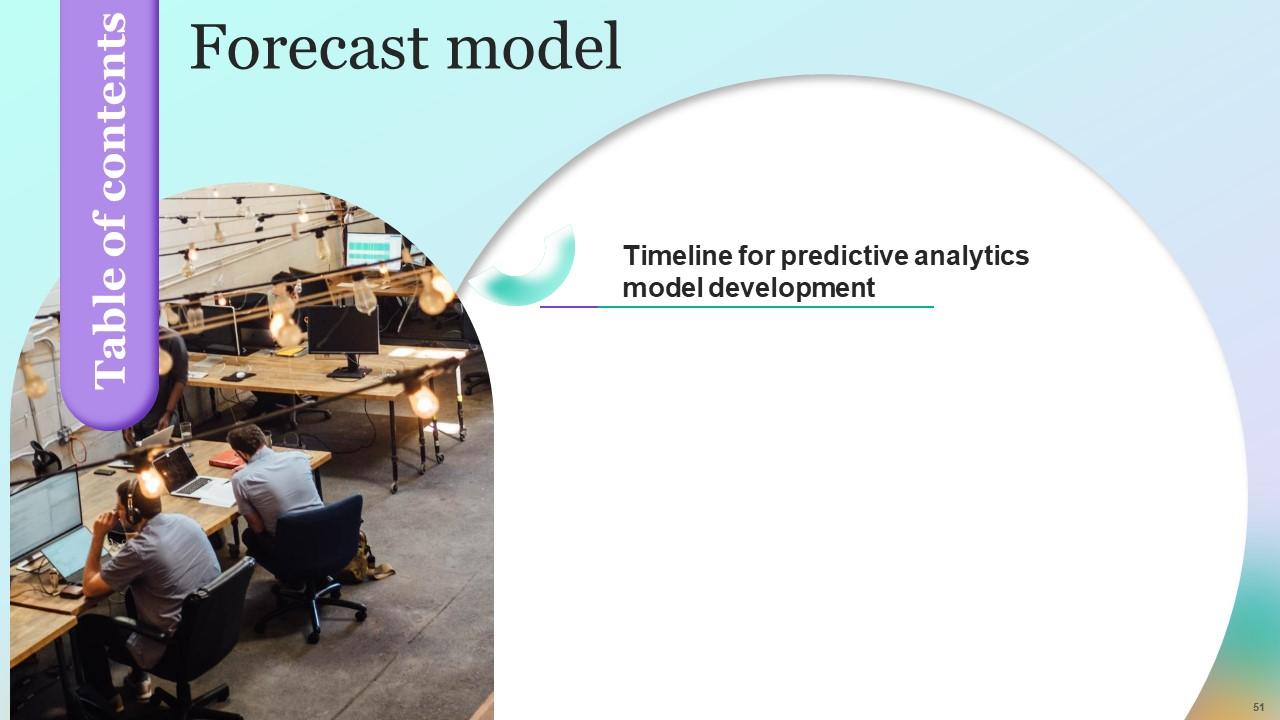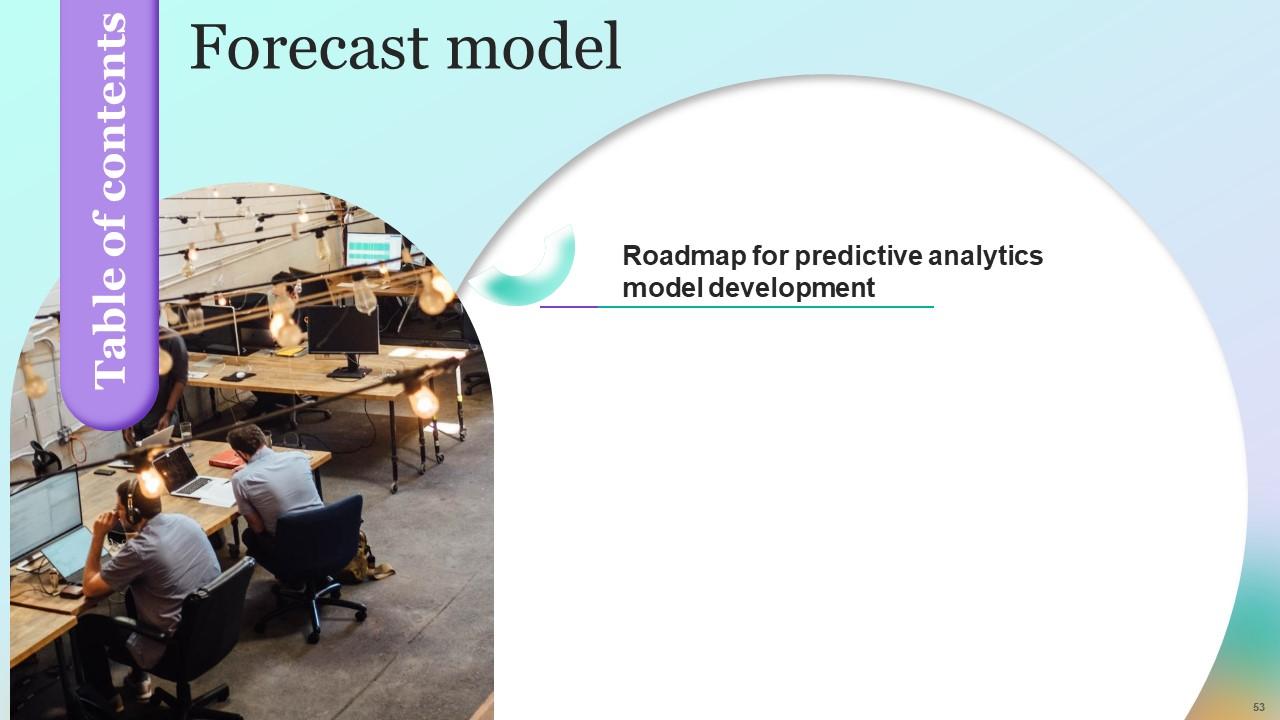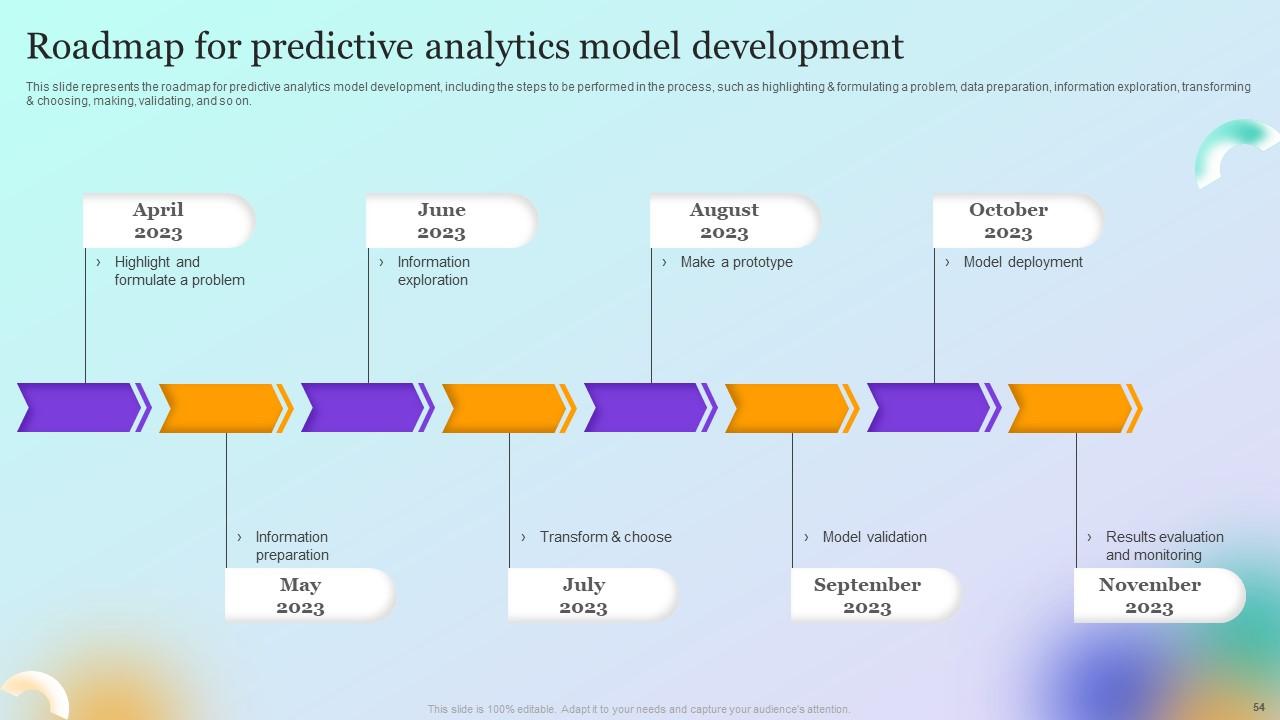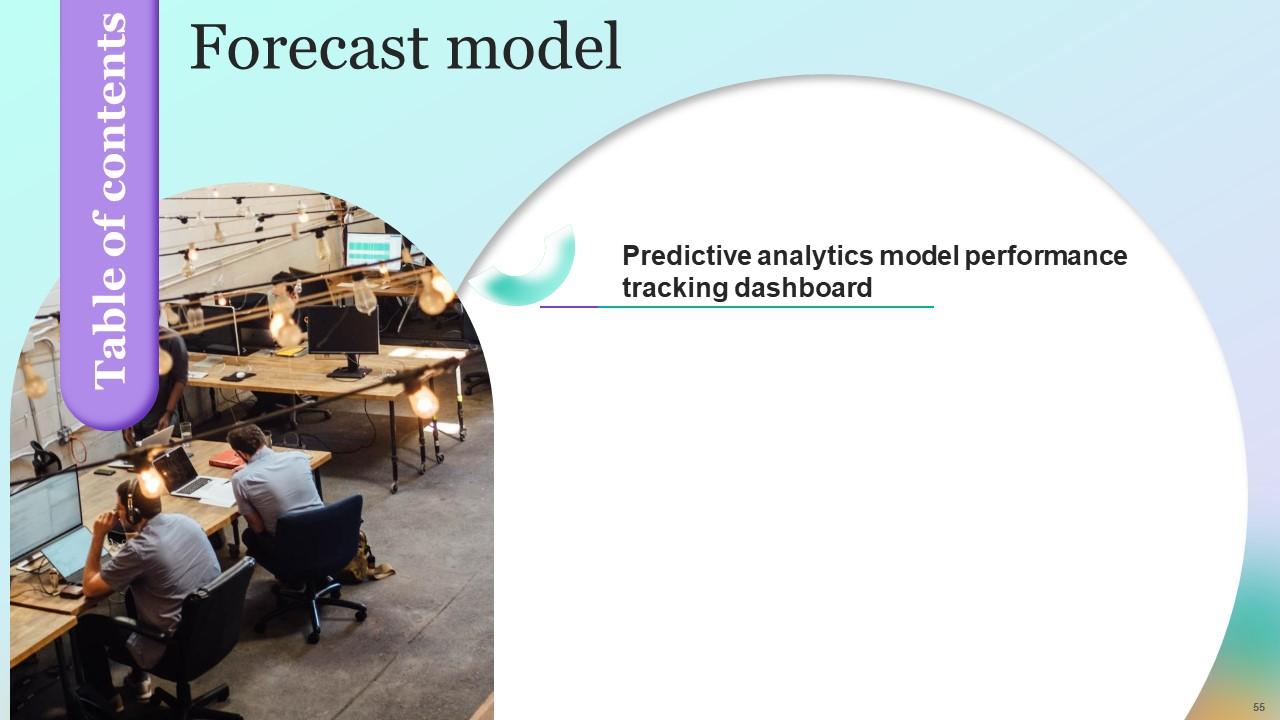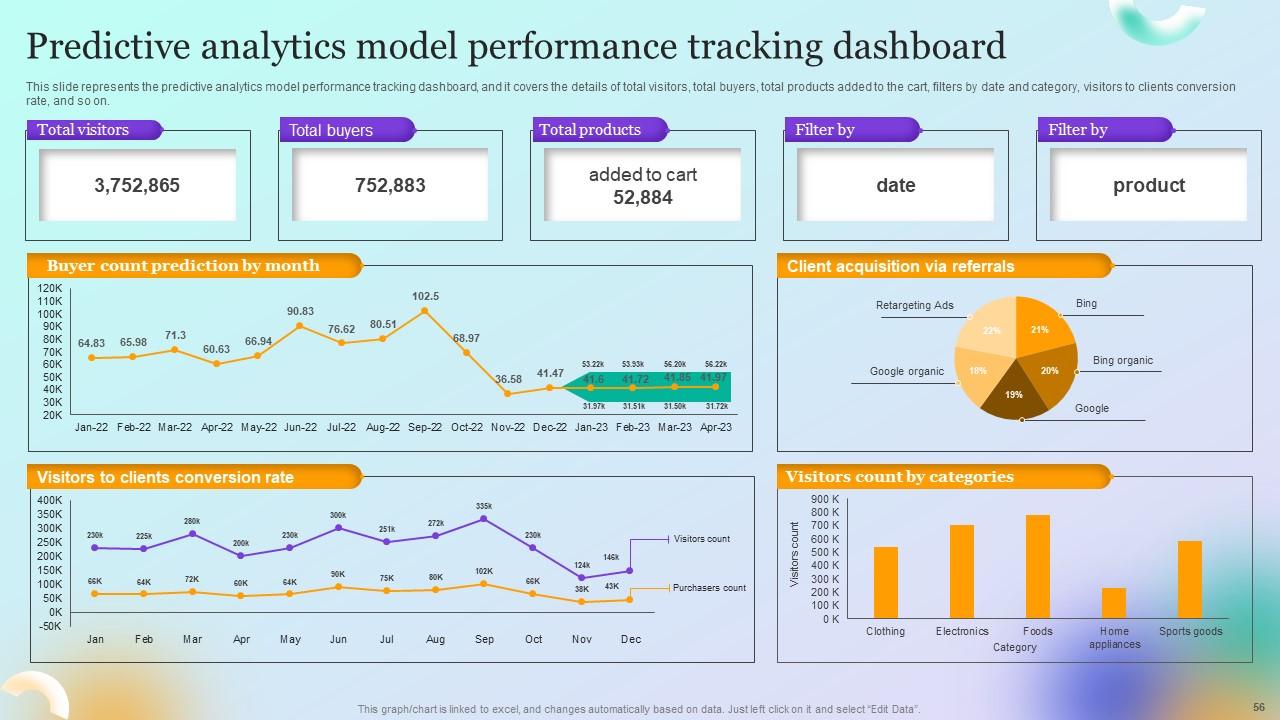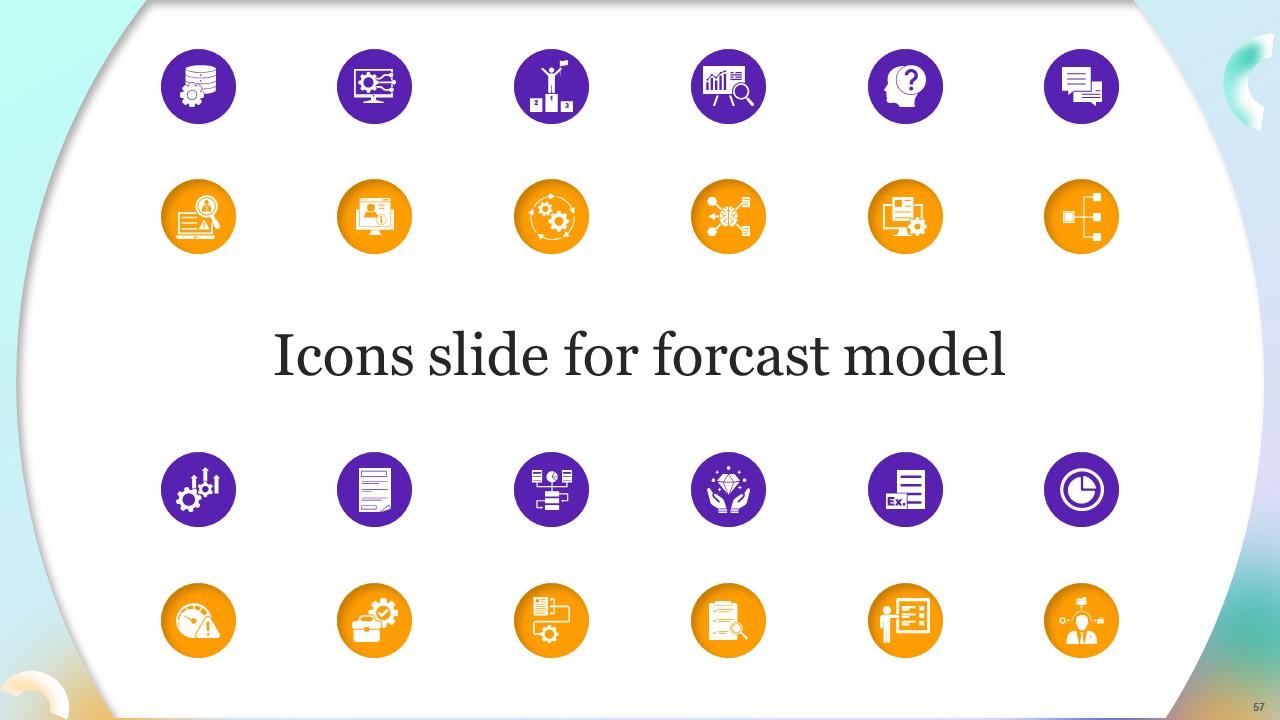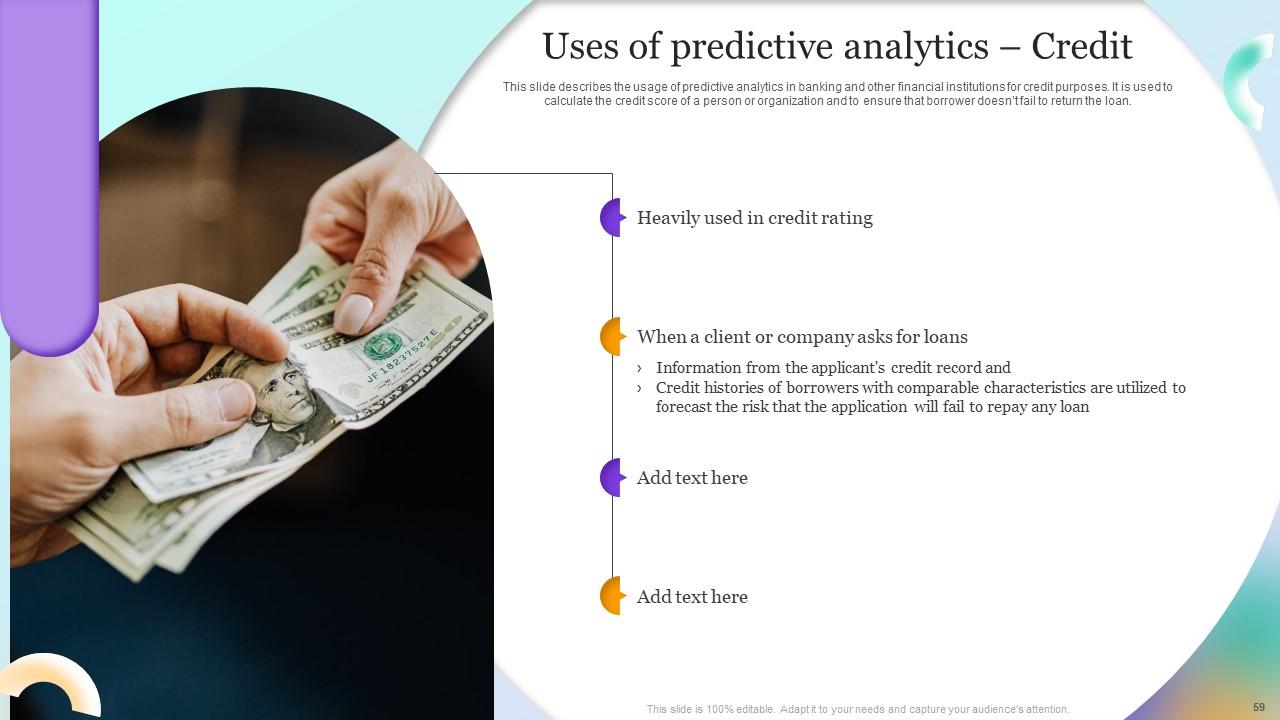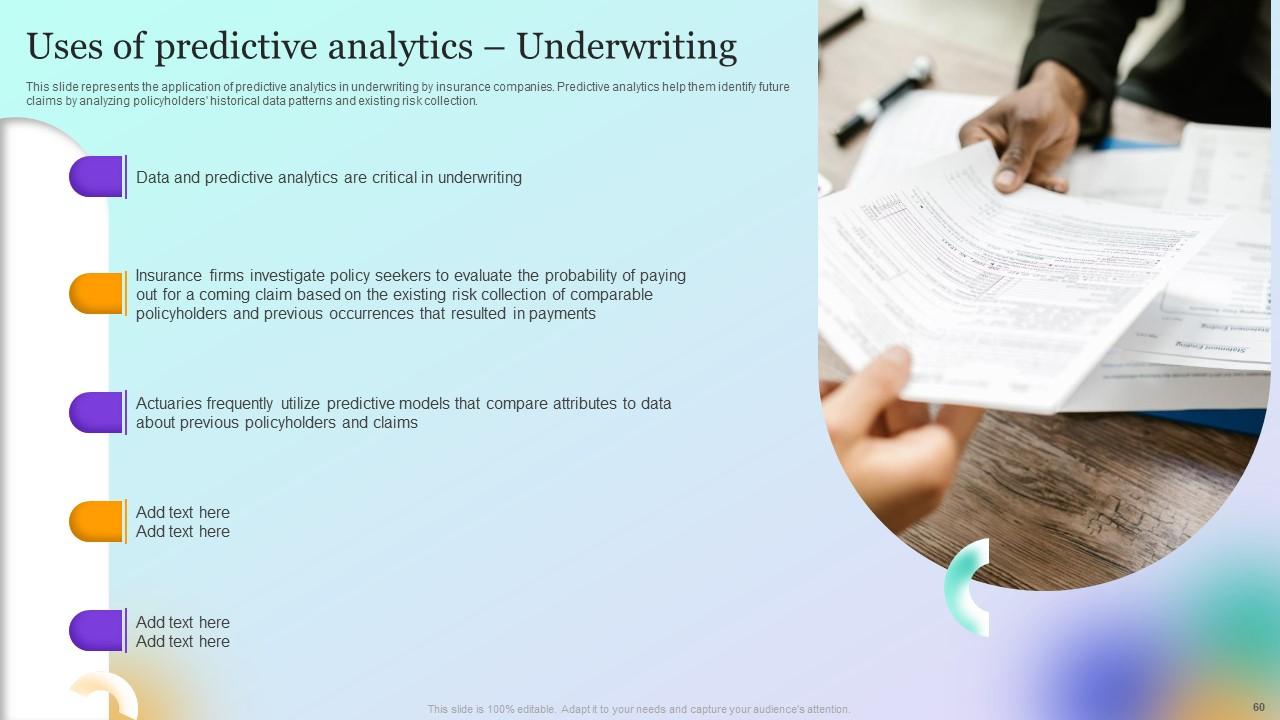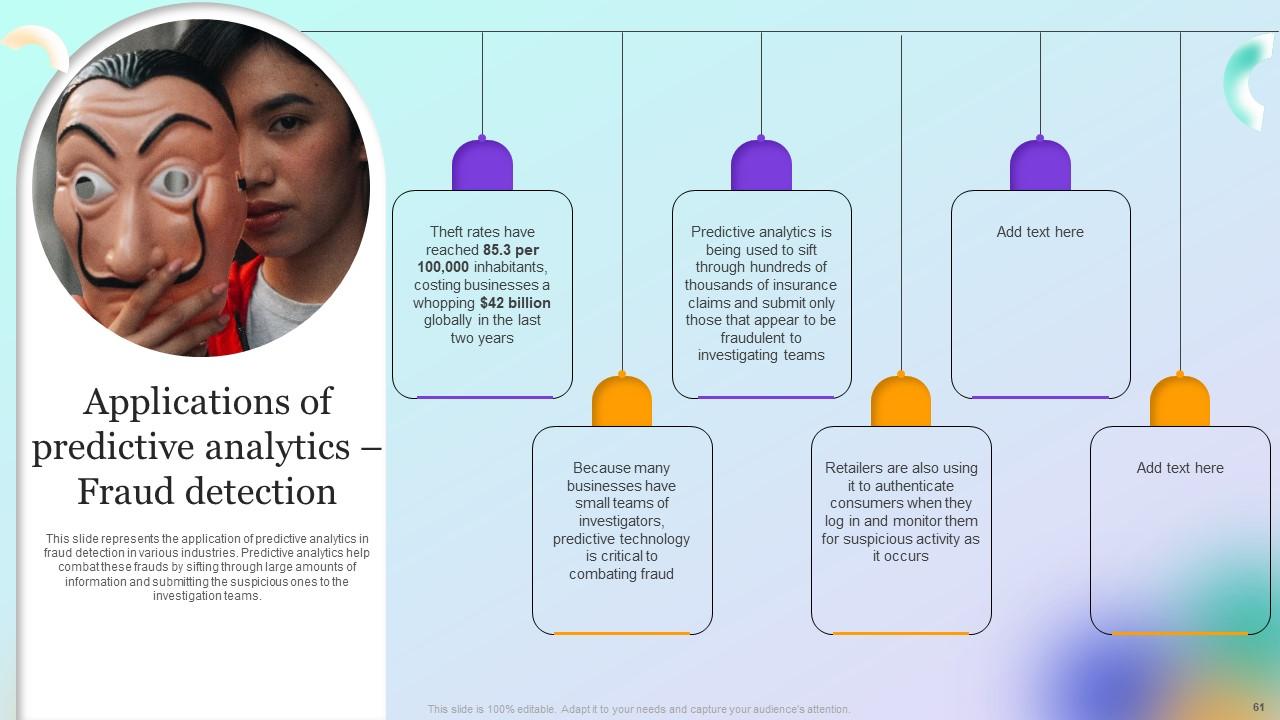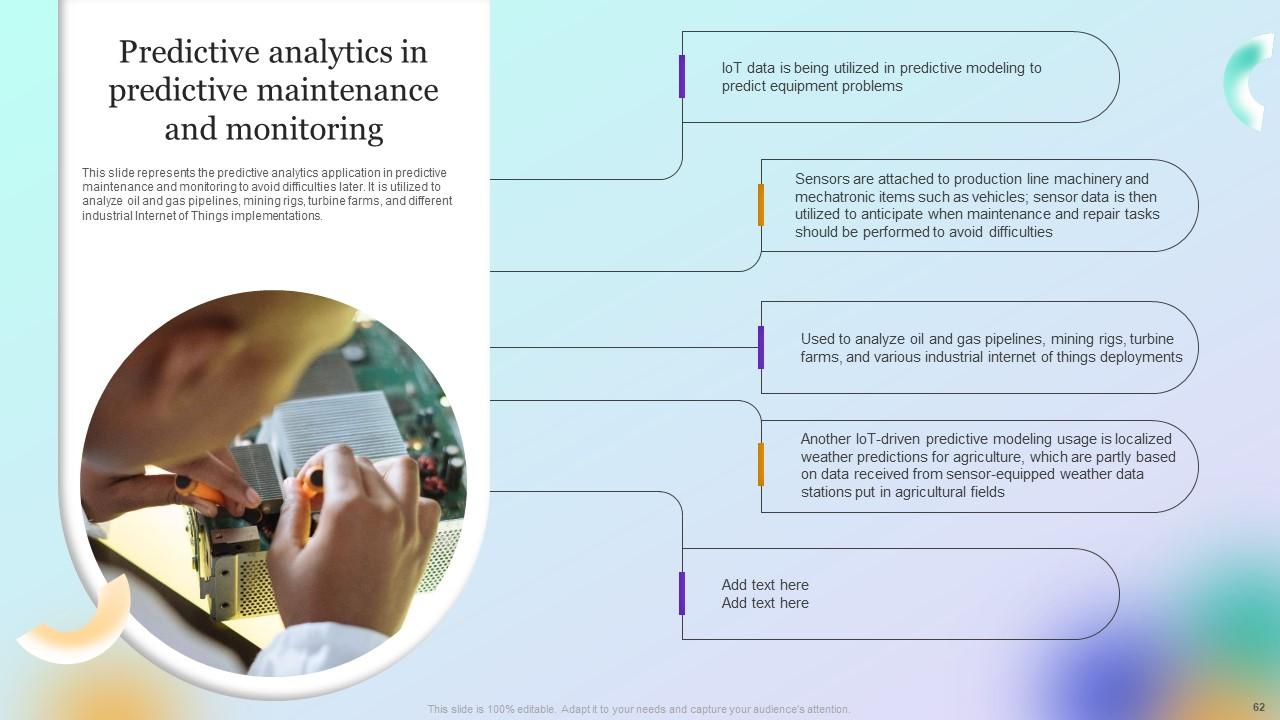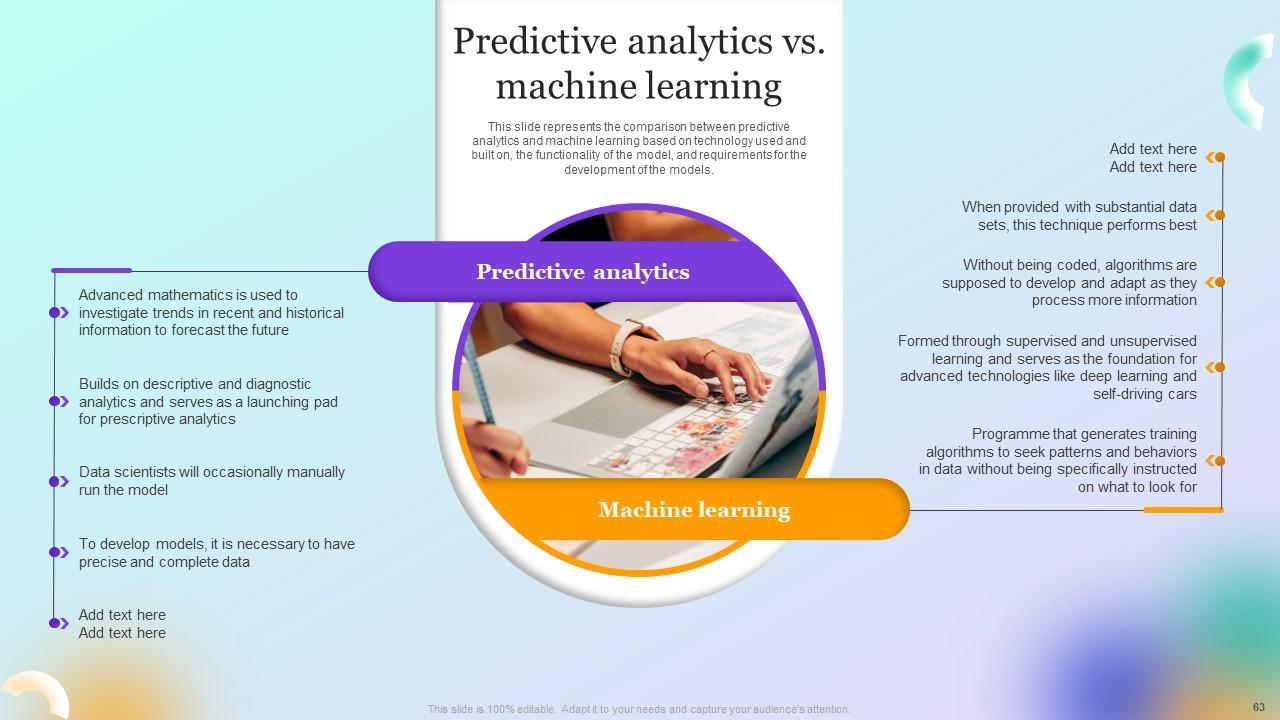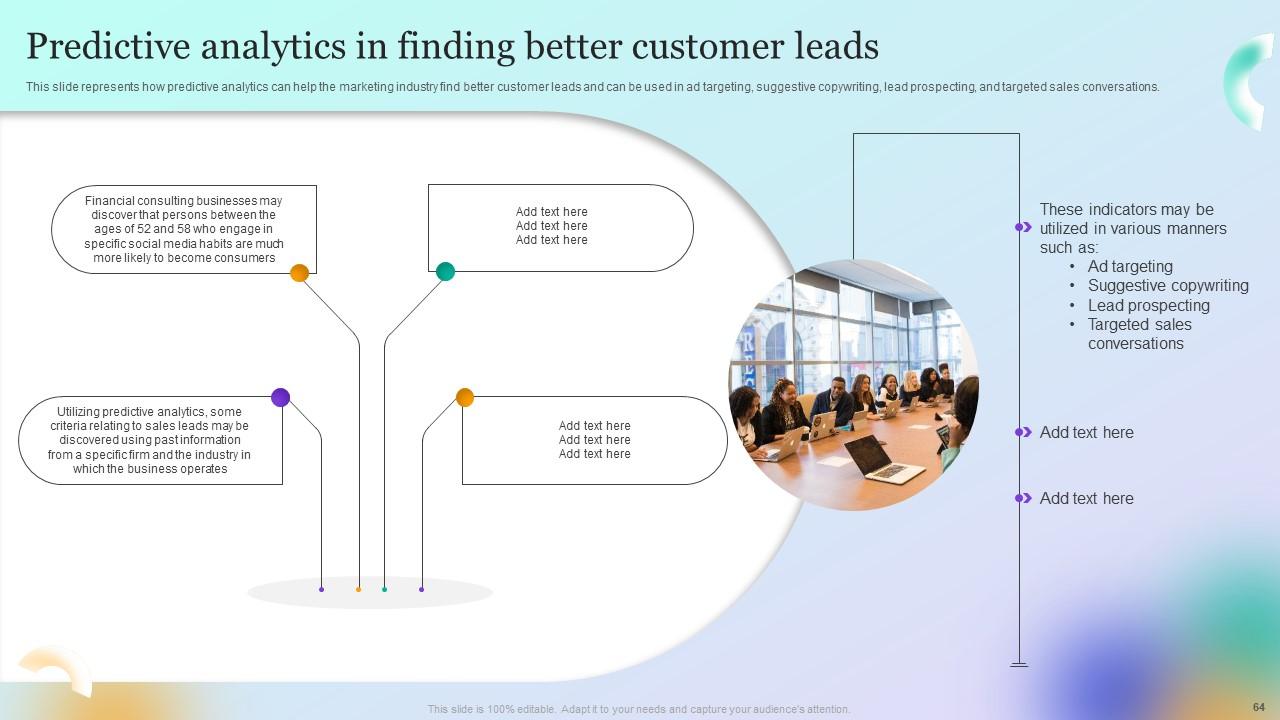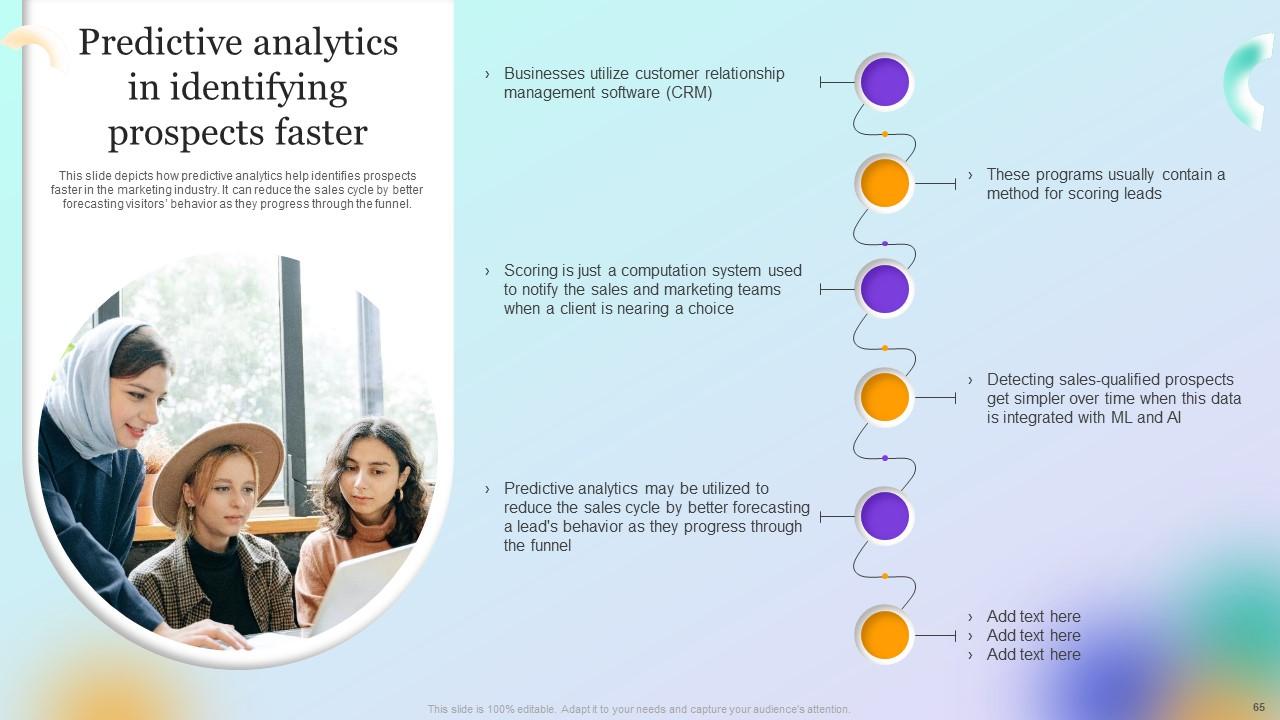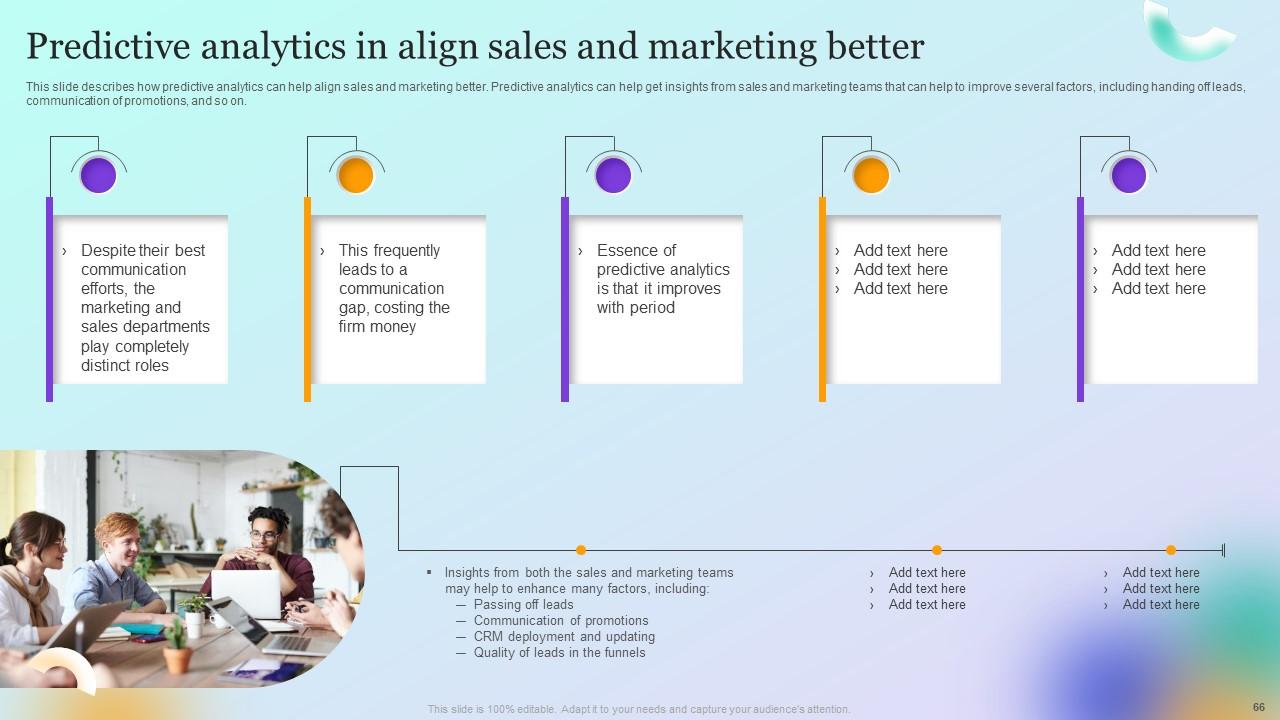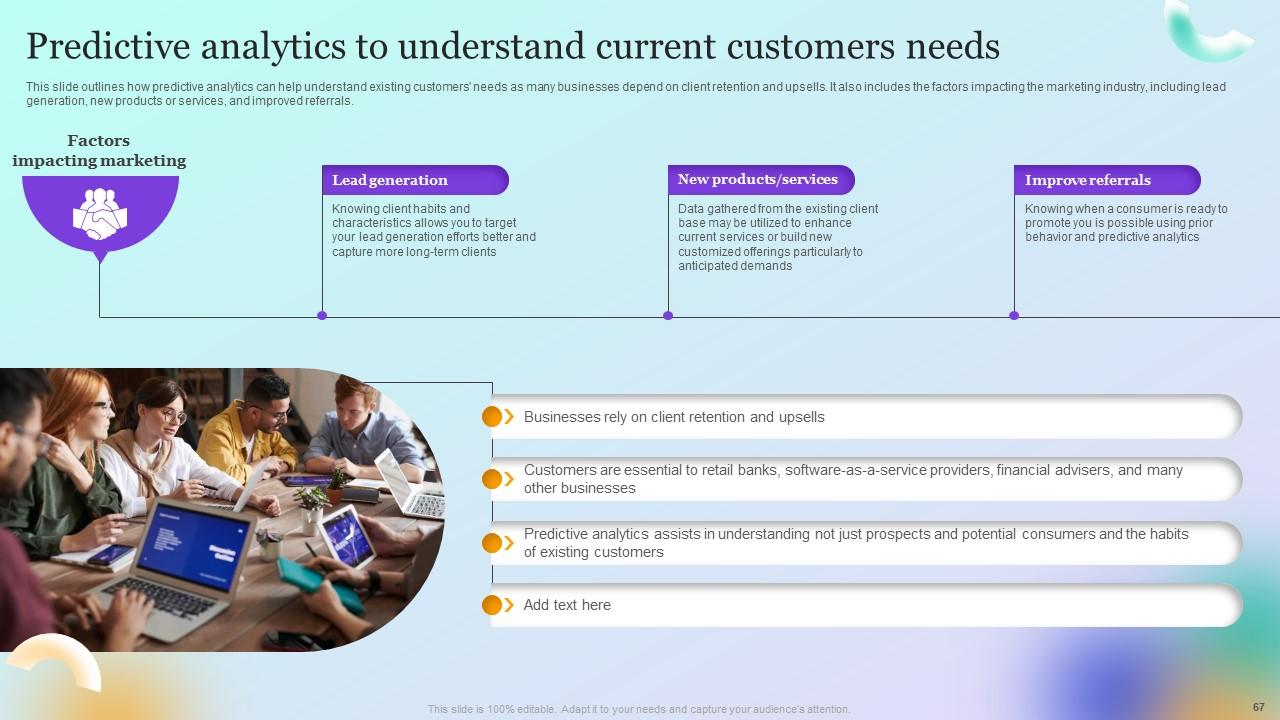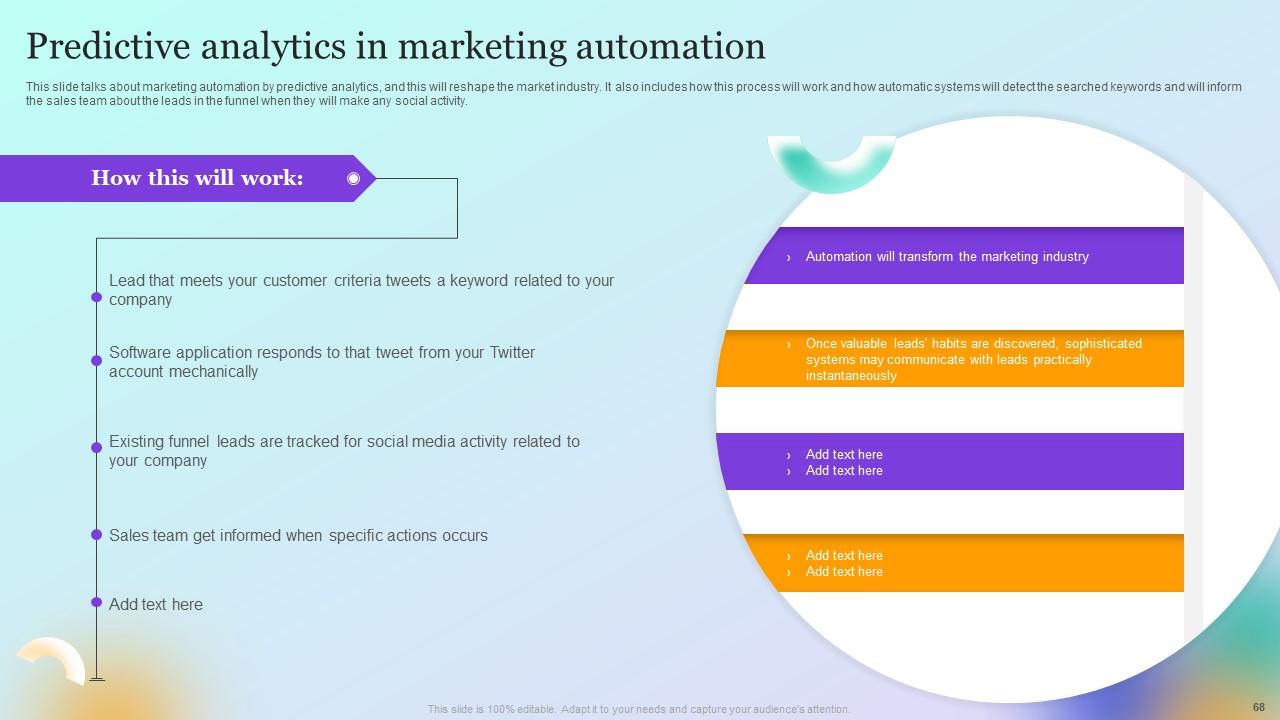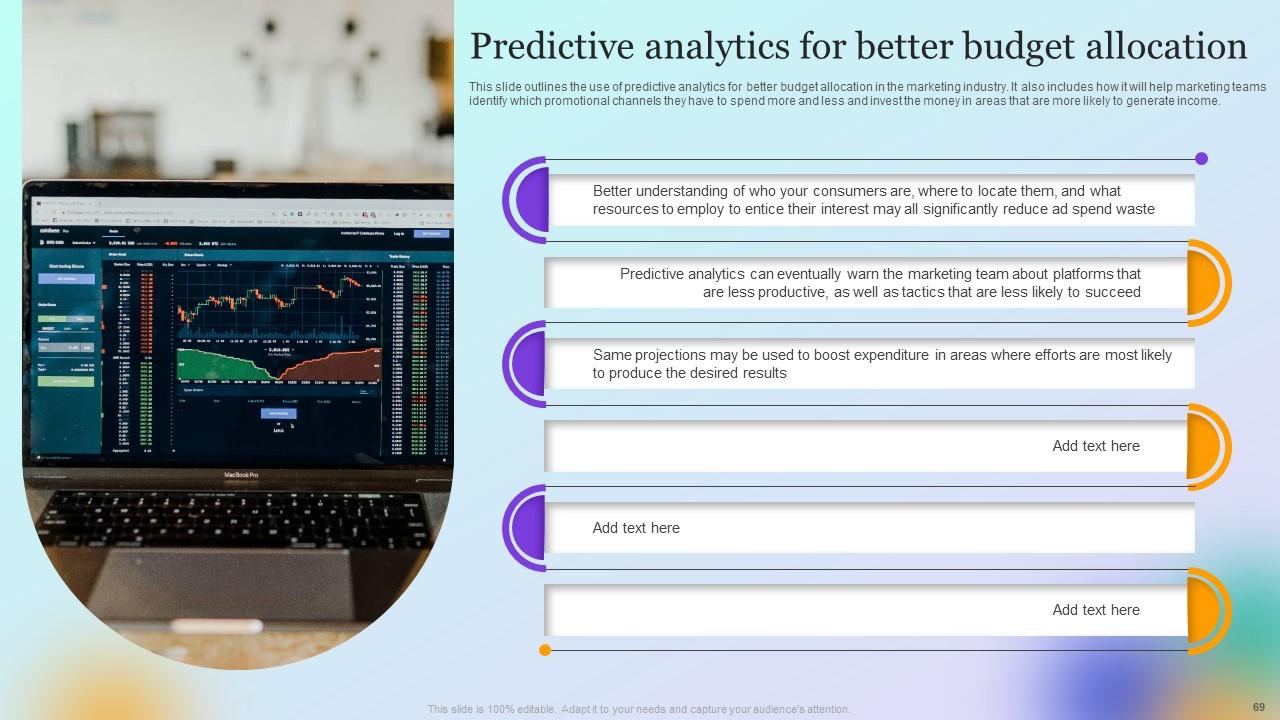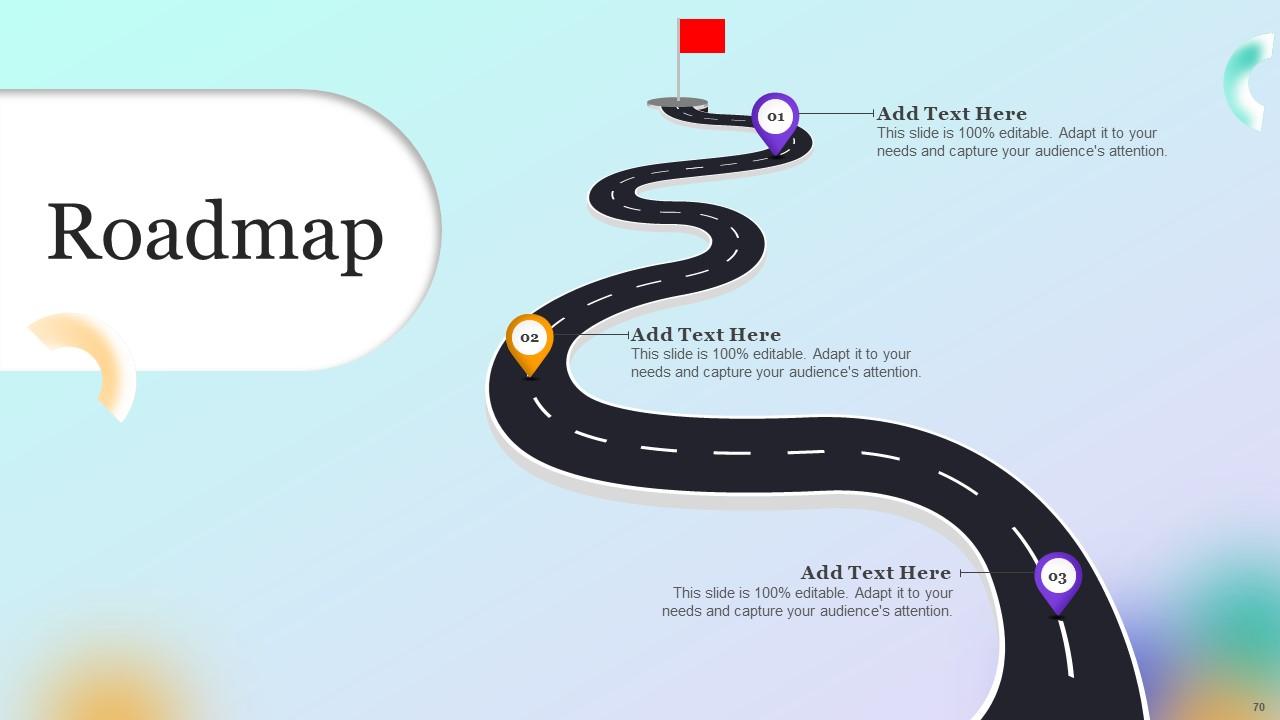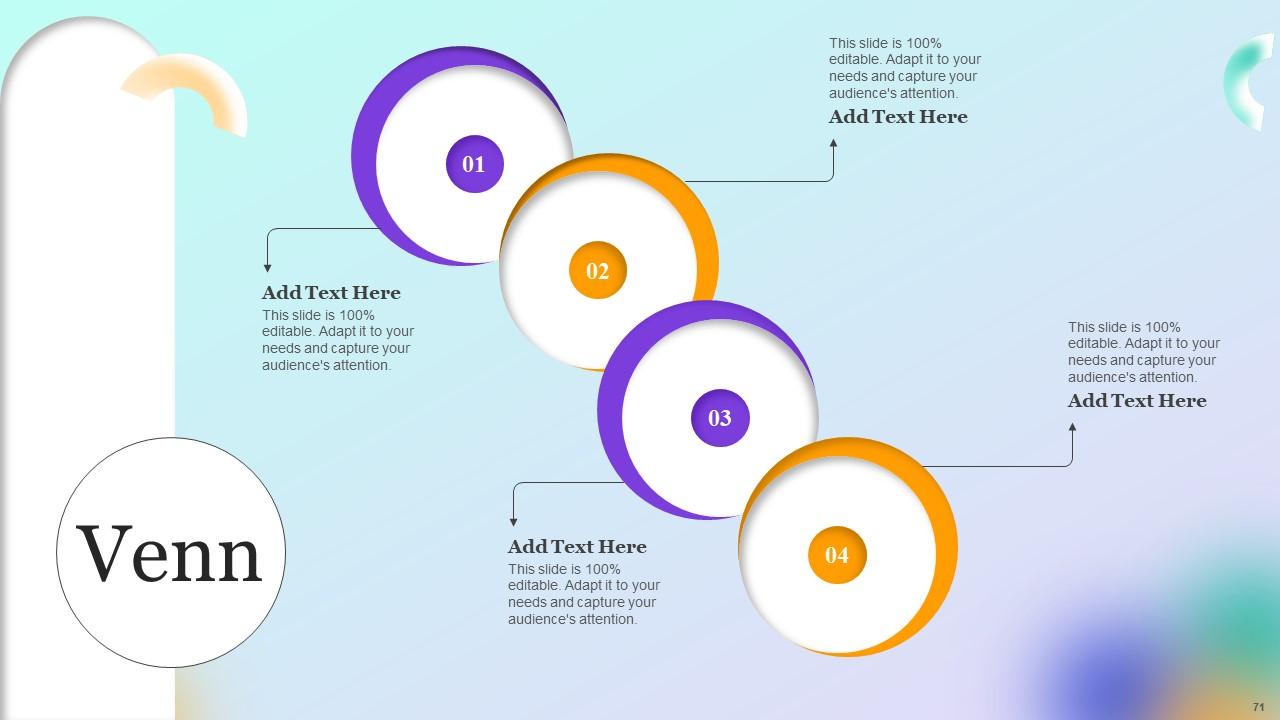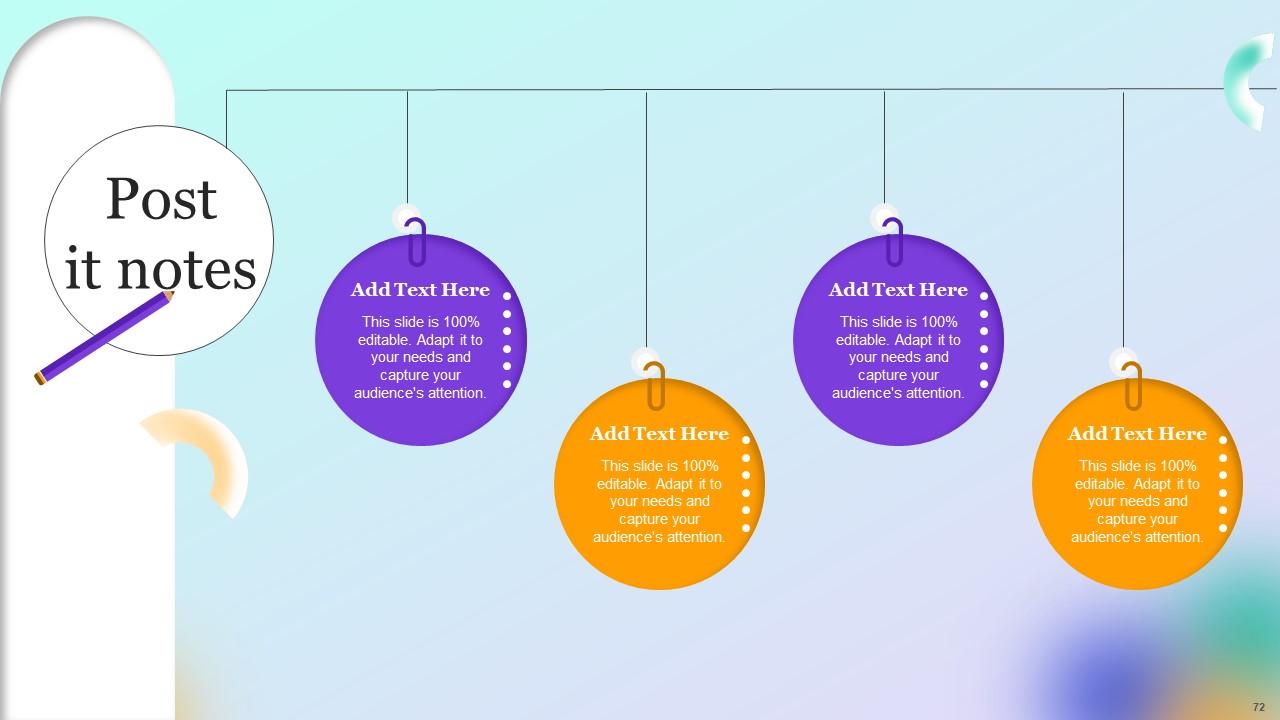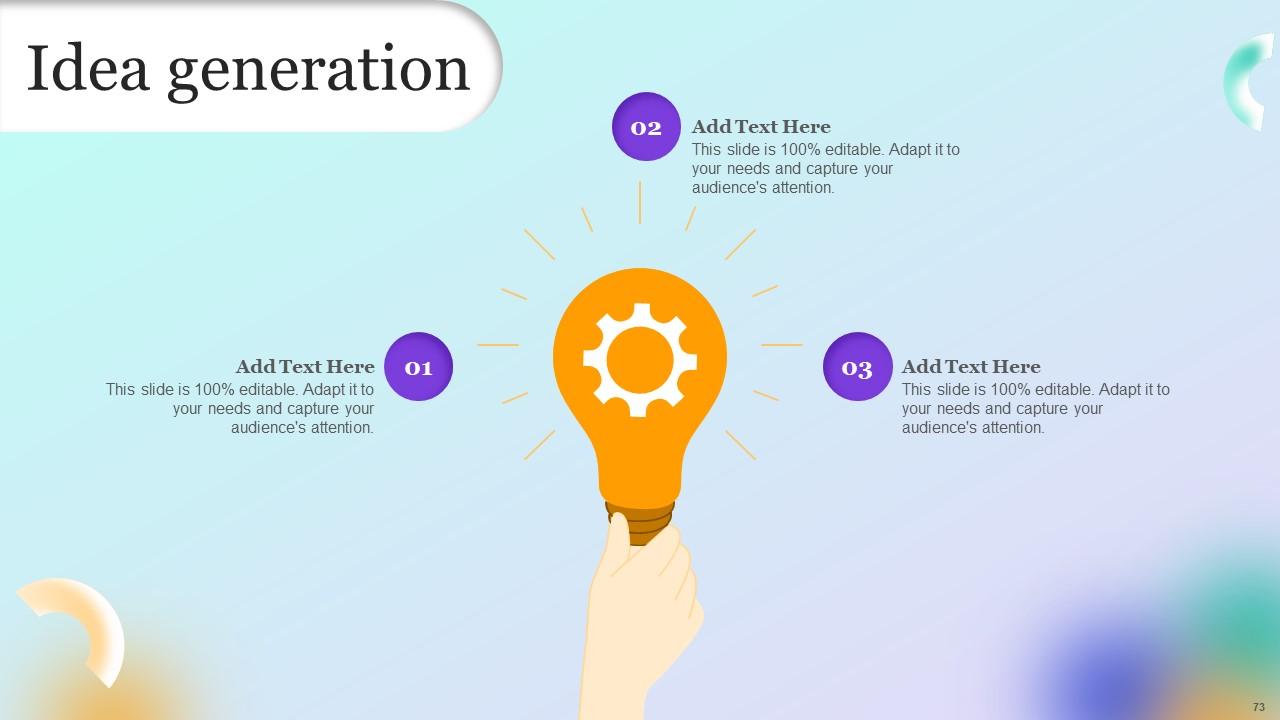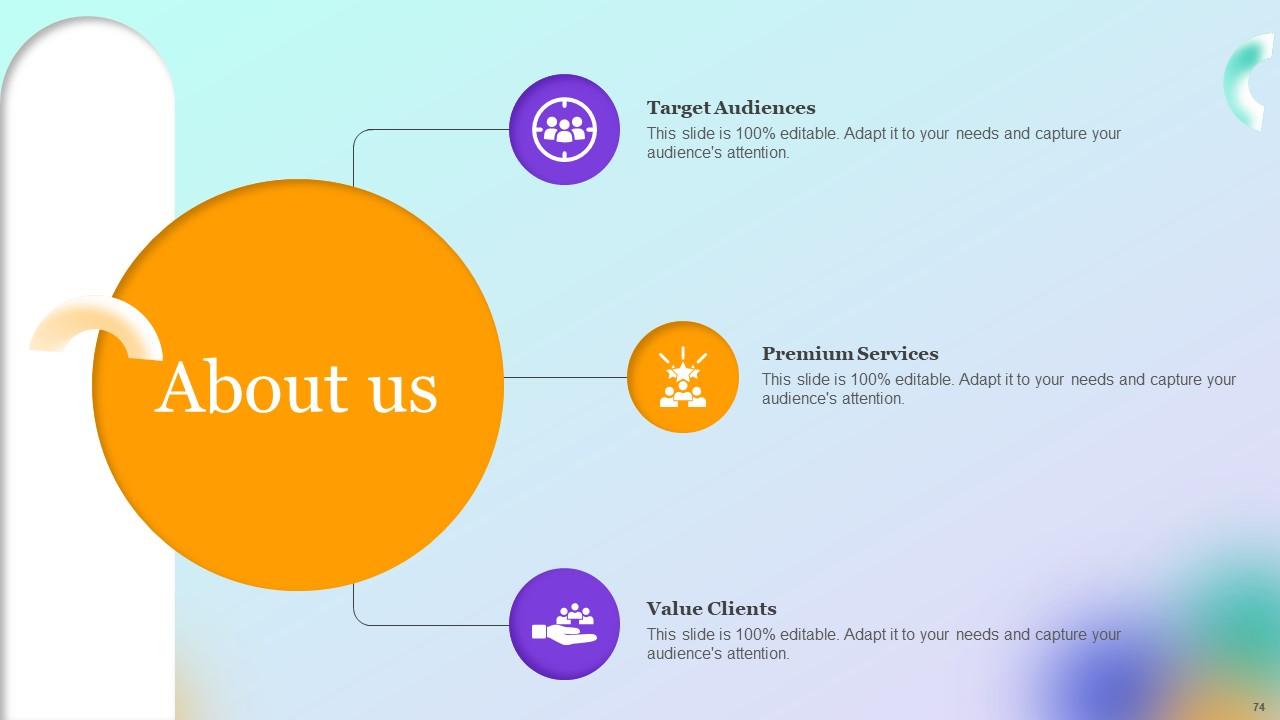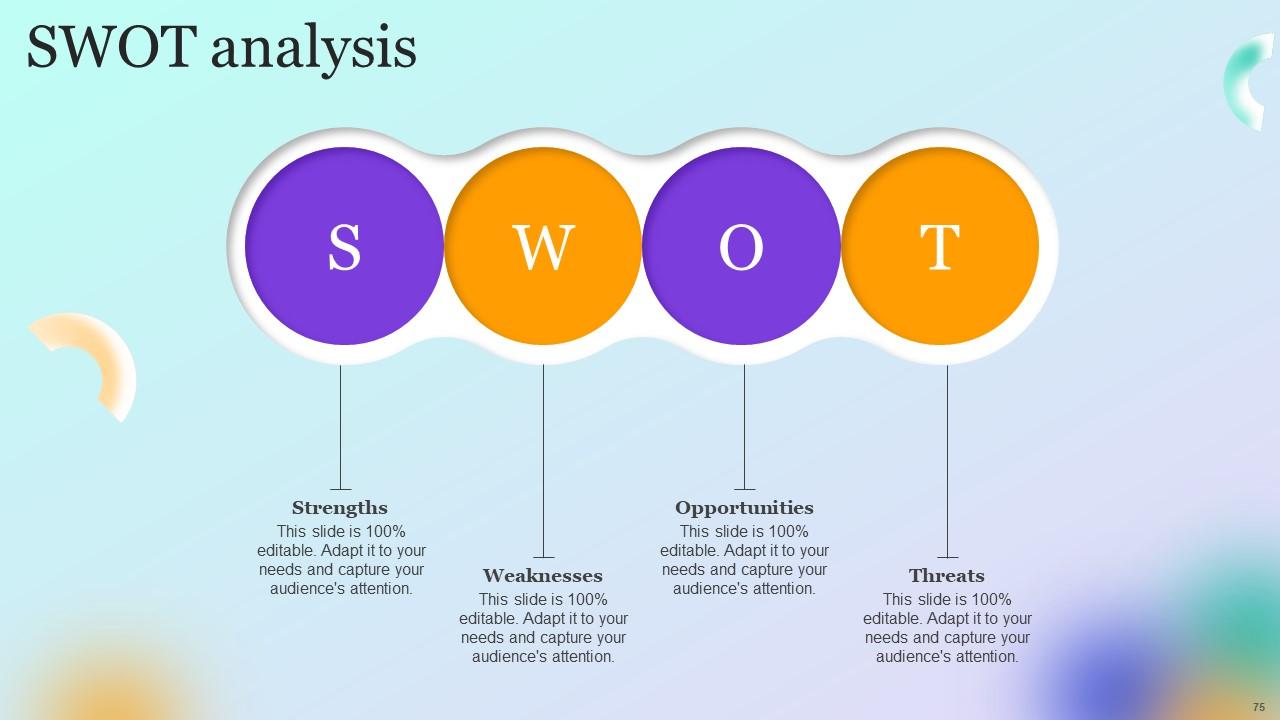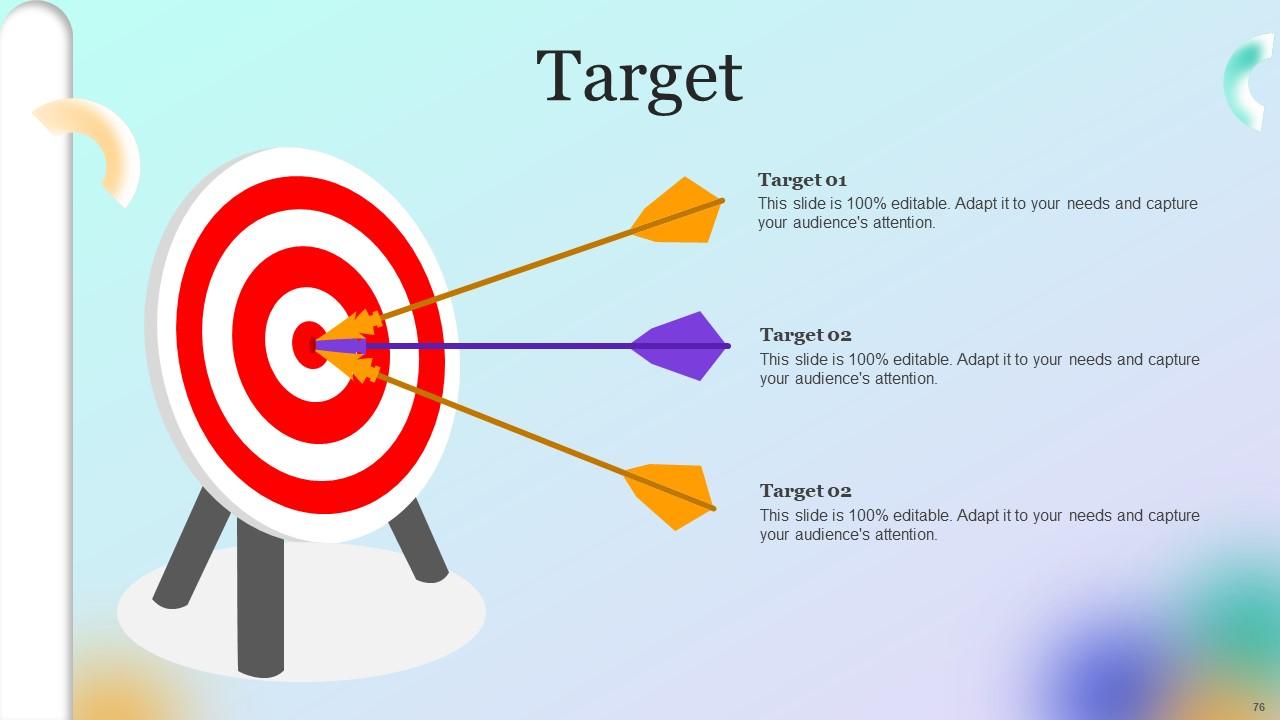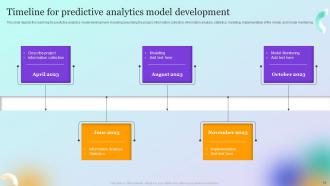Forecast Model Powerpoint Presentation Slides
Predictive analytics holds applicability and value across a wide range of industries. Explore our efficiently designed Forecast Model PowerPoint Presentation that provides a concise understanding of predictive analytics. This approach utilizes statistical techniques, machine learning algorithms, and other tools to analyze historical data and make predictions about future events or outcomes. Within our Predictive Analytics deck, we cover the introduction to predictive analytics, its framework, and the various models employed. Additionally, our Estimation Model PPT showcases different predictive analytics tools and their workflow. Our Forecast Model PPT delves into multiple predictive analytics models. It also sheds light on prominent business sectors that have already embraced predictive analytics in their day-to-day operations, including healthcare, banking, finance, and more. Moreover, our Prospective Analysis module includes a training program and a budgetary framework for developing a predictive analytics model. Finally, we provide a checklist, timeline, and roadmap for deploying a predictive analytics model, accompanied by a performance tracking dashboard. Take advantage of this opportunity now to access our comprehensive and customizable template on Predictive Analytics.
Predictive analytics holds applicability and value across a wide range of industries. Explore our efficiently designed Fore..
- Google Slides is a new FREE Presentation software from Google.
- All our content is 100% compatible with Google Slides.
- Just download our designs, and upload them to Google Slides and they will work automatically.
- Amaze your audience with SlideTeam and Google Slides.
-
Want Changes to This PPT Slide? Check out our Presentation Design Services
- WideScreen Aspect ratio is becoming a very popular format. When you download this product, the downloaded ZIP will contain this product in both standard and widescreen format.
-

- Some older products that we have may only be in standard format, but they can easily be converted to widescreen.
- To do this, please open the SlideTeam product in Powerpoint, and go to
- Design ( On the top bar) -> Page Setup -> and select "On-screen Show (16:9)” in the drop down for "Slides Sized for".
- The slide or theme will change to widescreen, and all graphics will adjust automatically. You can similarly convert our content to any other desired screen aspect ratio.
Compatible With Google Slides

Get This In WideScreen
You must be logged in to download this presentation.
PowerPoint presentation slides
This complete deck covers various topics and highlights important concepts. It has PPT slides which cater to your business needs. This complete deck presentation emphasizes Forecast Model Powerpoint Presentation Slides and has templates with professional background images and relevant content. This deck consists of total of seventy seven slides. Our designers have created customizable templates, keeping your convenience in mind. You can edit the color, text and font size with ease. Not just this, you can also add or delete the content if needed. Get access to this fully editable complete presentation by clicking the download button below.
People who downloaded this PowerPoint presentation also viewed the following :
Content of this Powerpoint Presentation
Slide 1: This slide introduces Forecast Model. State your company name and begin.
Slide 2: This is an Agenda slide. State your agendas here.
Slide 3: This slide shows Table of Content for the presentation.
Slide 4: This slide shows title for topics that are to be covered next in the template.
Slide 5: This slide represents the predictive analytics introduction.
Slide 6: This slide outlines the overview of the predictive analytics framework and its components.
Slide 7: This slide depicts the overview of predictive analytics models.
Slide 8: This slide shows title for topics that are to be covered next in the template.
Slide 9: This slide depicts the importance of predictive analytics in different industries.
Slide 10: This slide describes the importance of predictive analytics.
Slide 11: This slide shows title for topics that are to be covered next in the template.
Slide 12: This slide depicts the tools used for predictive analytics to perform operations in predictive models.
Slide 13: This slide represents the predictive analytics workflow that is widely used in managing energy loads in electric grids.
Slide 14: This slide presents the steps for predictive analytics workflow application in industries.
Slide 15: This slide shows title for topics that are to be covered next in the template.
Slide 16: This slide presents the difference between the main types of advanced analytics.
Slide 17: This slide shows title for topics that are to be covered next in the template.
Slide 18: This slide describes the overview of the classification model used in predictive analytics.
Slide 19: This slide depicts the decision tree model of predictive analytics that are beneficial for quick decision-making.
Slide 20: This slide presents the random forest technique to implement a classification model.
Slide 21: This slide shows title for topics that are to be covered next in the template.
Slide 22: This slide presents the overview of the clustering model of predictive analytics covering.
Slide 23: This slide outlines the two primary information clustering methods used in the predictive analytics clustering model.
Slide 24: This slide shows title for topics that are to be covered next in the template.
Slide 25: This slide presents the regression model of predictive analytics that is most commonly used in statistical analysis.
Slide 26: This slide describes the types of the regression model, including its overview, examples, and usage percentage.
Slide 27: This slide shows title for topics that are to be covered next in the template.
Slide 28: This slide depicts the neural networks model of predictive analytics.
Slide 29: This slide presents different types of the neural network model.
Slide 30: This slide shows title for topics that are to be covered next in the template.
Slide 31: This slide outlines the introduction of the forecast model used for predictive analytics.
Slide 32: This slide describes the outliers model used for predictive analytics.
Slide 33: This slide presents the time series model of predictive analytics that makes future outcome predictions by taking time as input.
Slide 34: This slide shows title for topics that are to be covered next in the template.
Slide 35: This slide discusses the steps required to create predictive algorithm models for business processes.
Slide 36: This slide depicts the lifecycle of the predictive analytics model.
Slide 37: This slide presents the working of predictive analytics models that operates iteratively.
Slide 38: This is another slide presenting the working of predictive analytics models that operates iteratively.
Slide 39: This slide shows title for topics that are to be covered next in the template.
Slide 40: This slide outlines the application of predictive analytics in the healthcare department.
Slide 41: This slide presents the application of predictive analytics in the finance and banking sector.
Slide 42: This slide presents predictive analytics in manufacturing forecasting for optimal use of resources.
Slide 43: This slide depicts the usage of predictive analytics technology in the government sector.
Slide 44: This slide presents the application of predictive analytics technology in the retail industry.
Slide 45: This slide outlines the use of predictive analytics in the marketing industry.
Slide 46: This slide shows title for topics that are to be covered next in the template.
Slide 47: This slide represents the training program for the predictive analytics model.
Slide 48: This slide describes the budget for developing predictive analytics model.
Slide 49: This slide shows title for topics that are to be covered next in the template.
Slide 50: This slide describes the checklist for predictive analytics deployment.
Slide 51: This slide shows title for topics that are to be covered next in the template.
Slide 52: This slide depicts the roadmap for predictive analytics model development.
Slide 53: This slide shows title for topics that are to be covered next in the template.
Slide 54: This slide presents the roadmap for predictive analytics model development.
Slide 55: This slide shows title for topics that are to be covered next in the template.
Slide 56: This slide presents the predictive analytics model performance tracking dashboard.
Slide 57: This slide shows all the icons included in the presentation.
Slide 58: This slide is titled as Additional Slides for moving forward.
Slide 59: This slide describes the usage of predictive analytics in banking and other financial institutions for credit purposes.
Slide 60: This slide presents the application of predictive analytics in underwriting by insurance companies.
Slide 61: This slide displays the application of predictive analytics in fraud detection in various industries.
Slide 62: This slide presents the predictive analytics application in predictive maintenance and monitoring to avoid difficulties later.
Slide 63: This slide shows the comparison between predictive analytics and machine learning.
Slide 64: This slide presents how predictive analytics can help the marketing industry find better customer leads.
Slide 65: This slide depicts how predictive analytics help identifies prospects faster in the marketing industry.
Slide 66: This slide describes how predictive analytics can help align sales and marketing better.
Slide 67: This slide outlines how predictive analytics can help understand existing customers.
Slide 68: This slide presents marketing automation by predictive analytics.
Slide 69: This slide outlines the use of predictive analytics for better budget allocation in the marketing industry.
Slide 70: This slide presents Roadmap with additional textboxes.
Slide 71: This slide depicts Venn diagram with text boxes.
Slide 72: This slide shows Post It Notes for reminders and deadlines. Post your important notes here.
Slide 73: This is an Idea Generation slide to state a new idea or highlight information, specifications etc.
Slide 74: This is About Us slide to show company specifications etc.
Slide 75: This slide shows SWOT analysis describing- Strength, Weakness, Opportunity, and Threat.
Slide 77: This is a Thank You slide with address, contact numbers and email address.
Forecast Model Powerpoint Presentation Slides with all 82 slides:
Use our Forecast Model Powerpoint Presentation Slides to effectively help you save your valuable time. They are readymade to fit into any presentation structure.
FAQs
Predictive analytics is a data analysis technique that uses historical and current data to make predictions about future events or outcomes.
The predictive analytics framework consists of various components, including data collection, data preprocessing, model training, model evaluation, and deployment.
Predictive analytics models are used to analyze data and make predictions or forecasts. They can be applied in various industries to optimize processes, make informed decisions, detect fraud, identify trends, and more.
There are several tools available for performing operations in predictive models, including popular ones like Python's scikit-learn, R programming language, TensorFlow, and Tableau.
Predictive analytics is crucial for industries as it helps in improving decision-making, optimizing operations, identifying patterns and trends, reducing risks, increasing efficiency, and gaining a competitive advantage in areas such as healthcare, finance, manufacturing, government, retail, and marketing.
-
Editable templates with innovative design and color combination.
-
One-stop solution for all presentation needs. Great products with easy customization.


